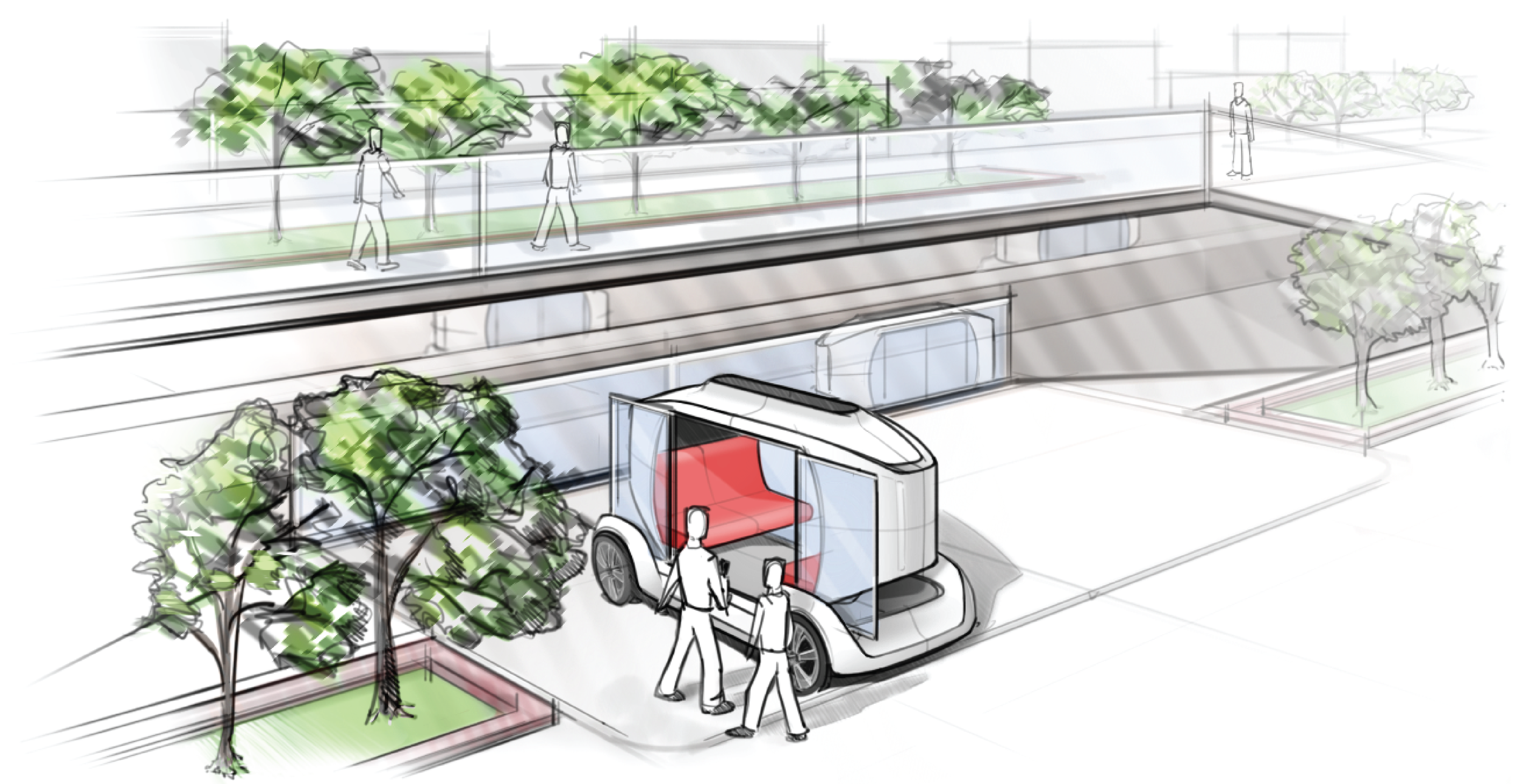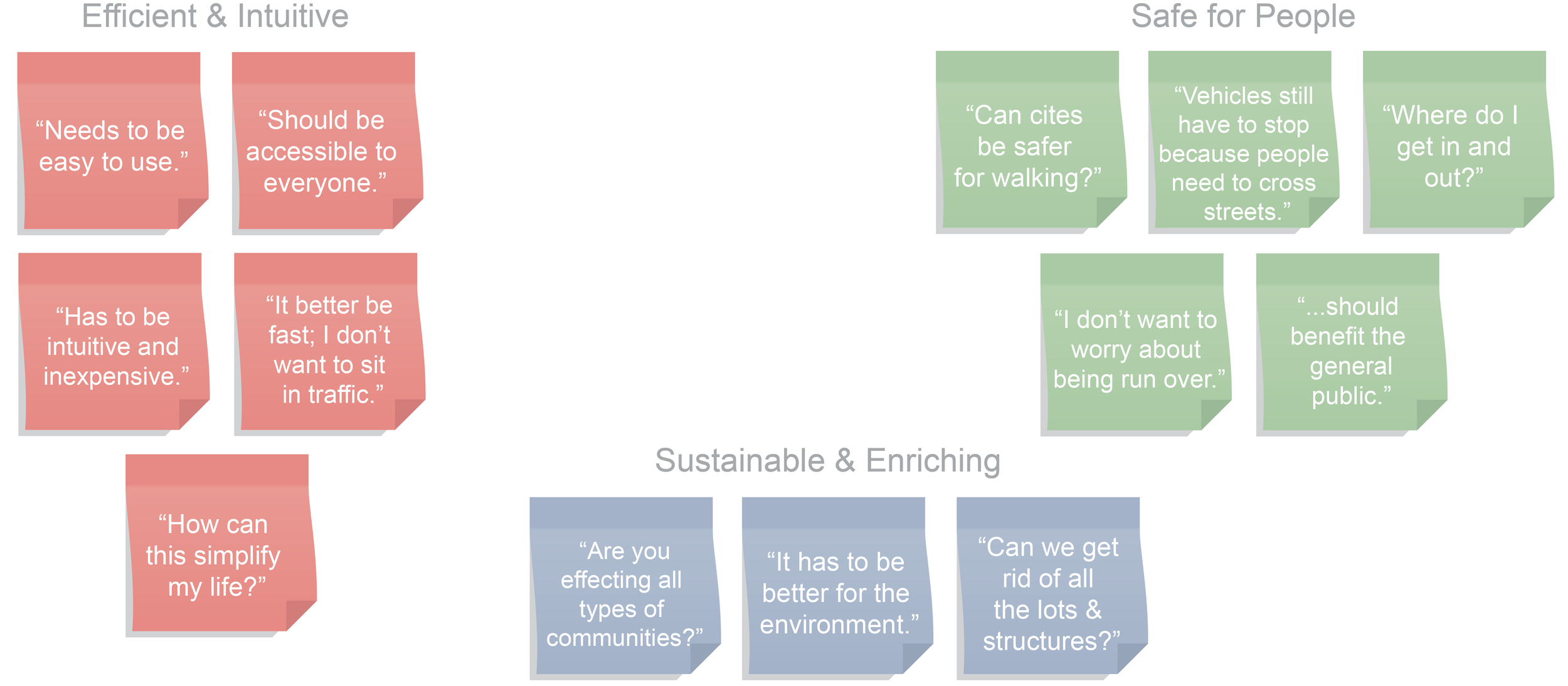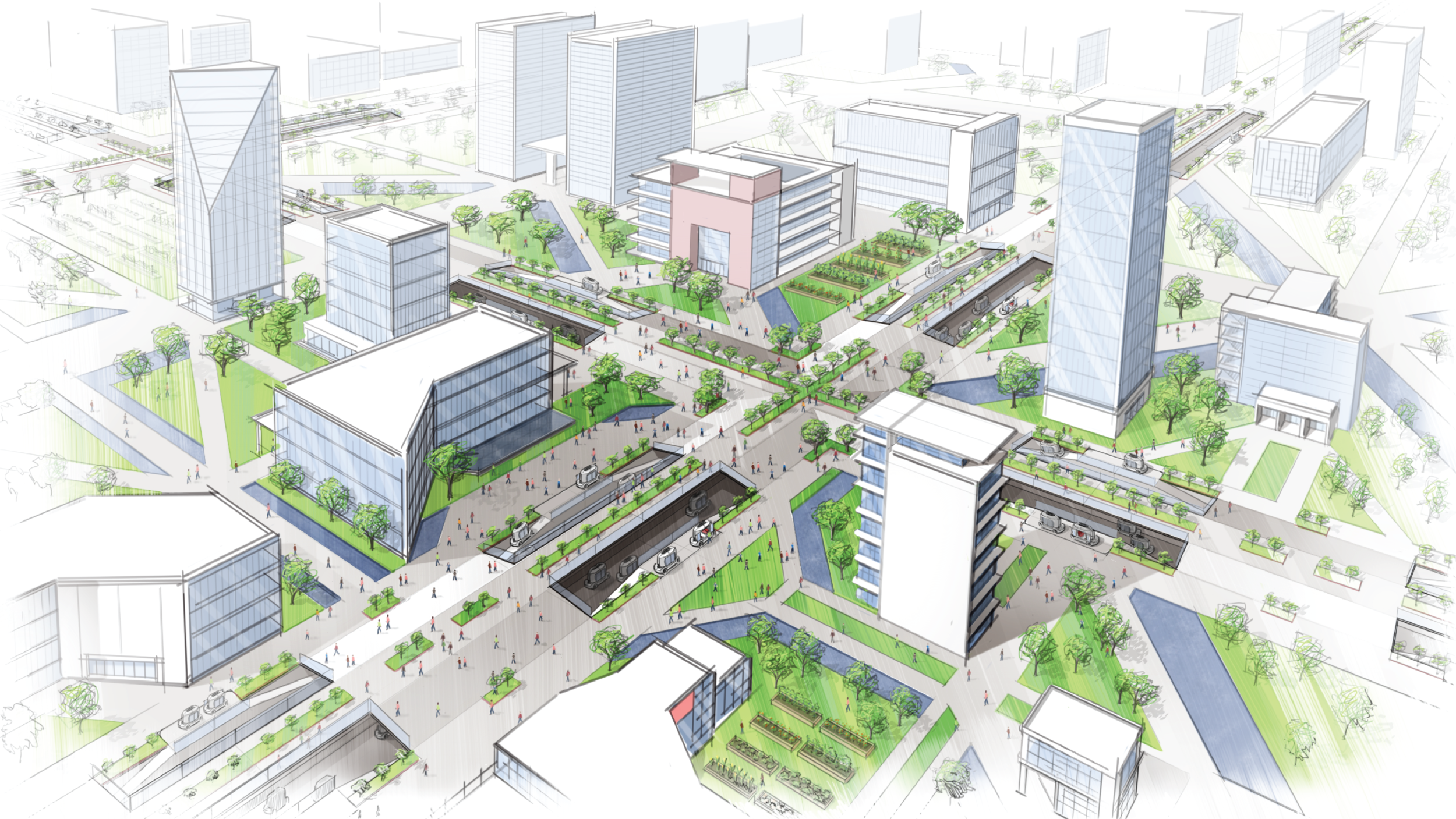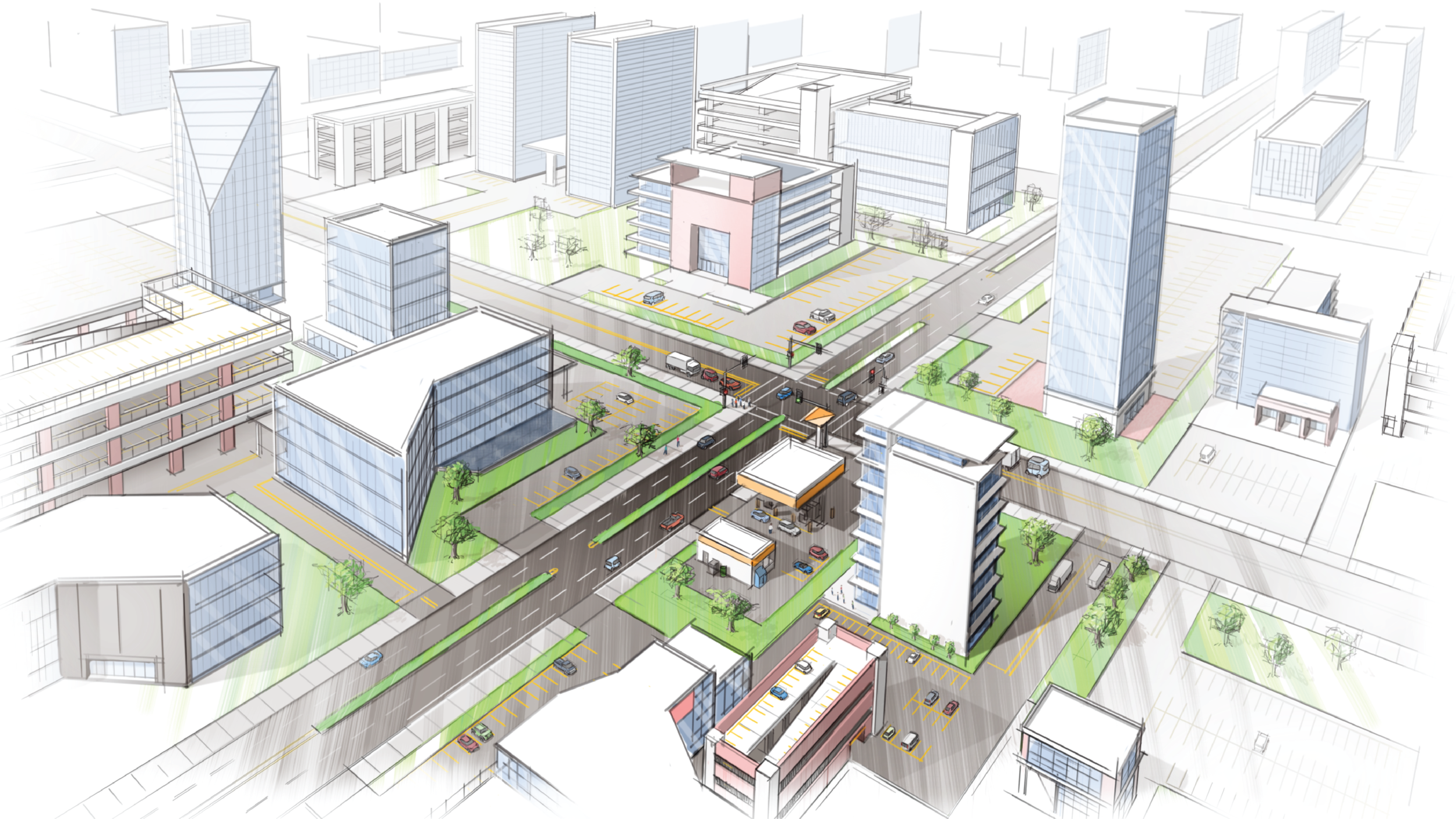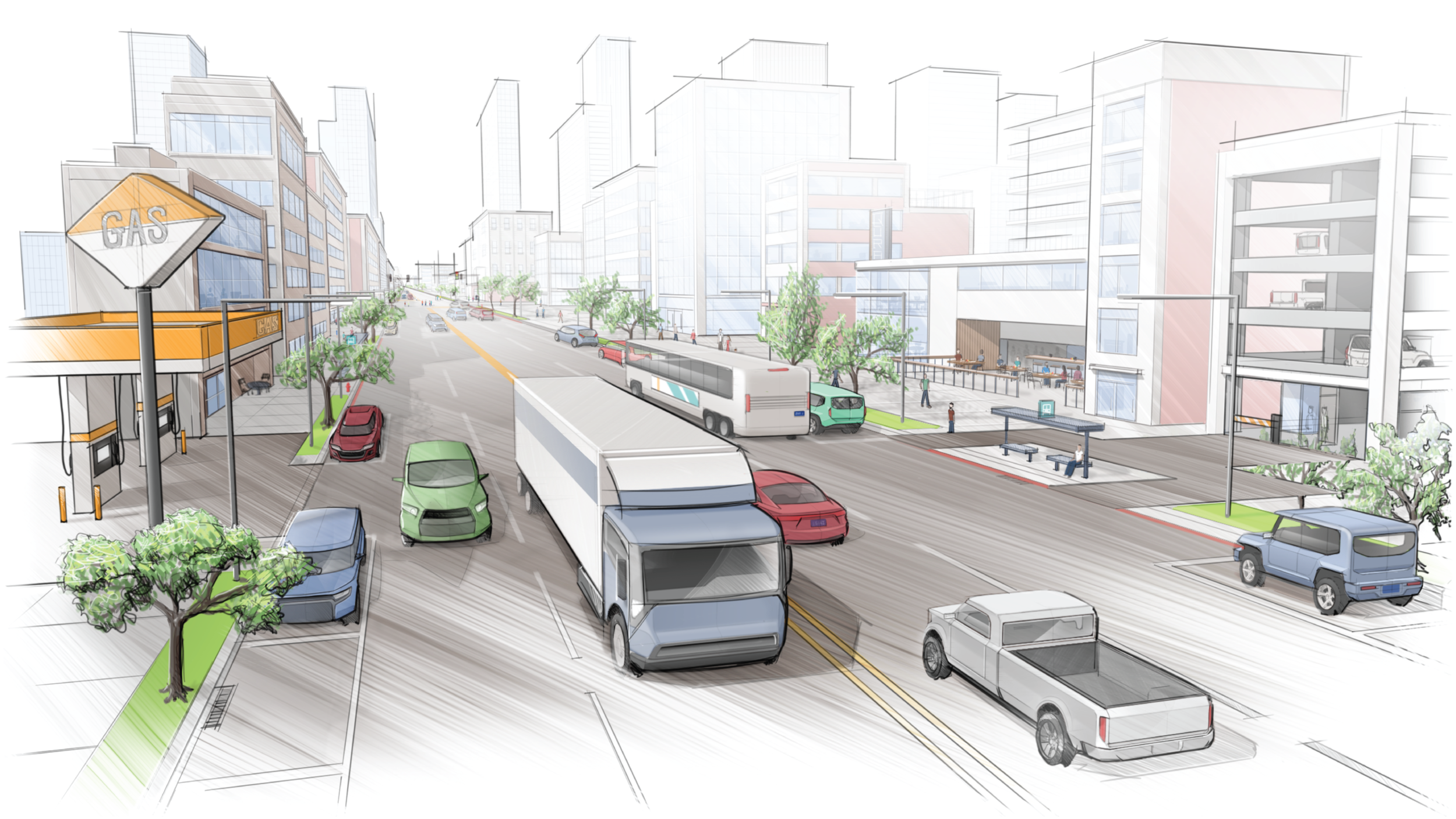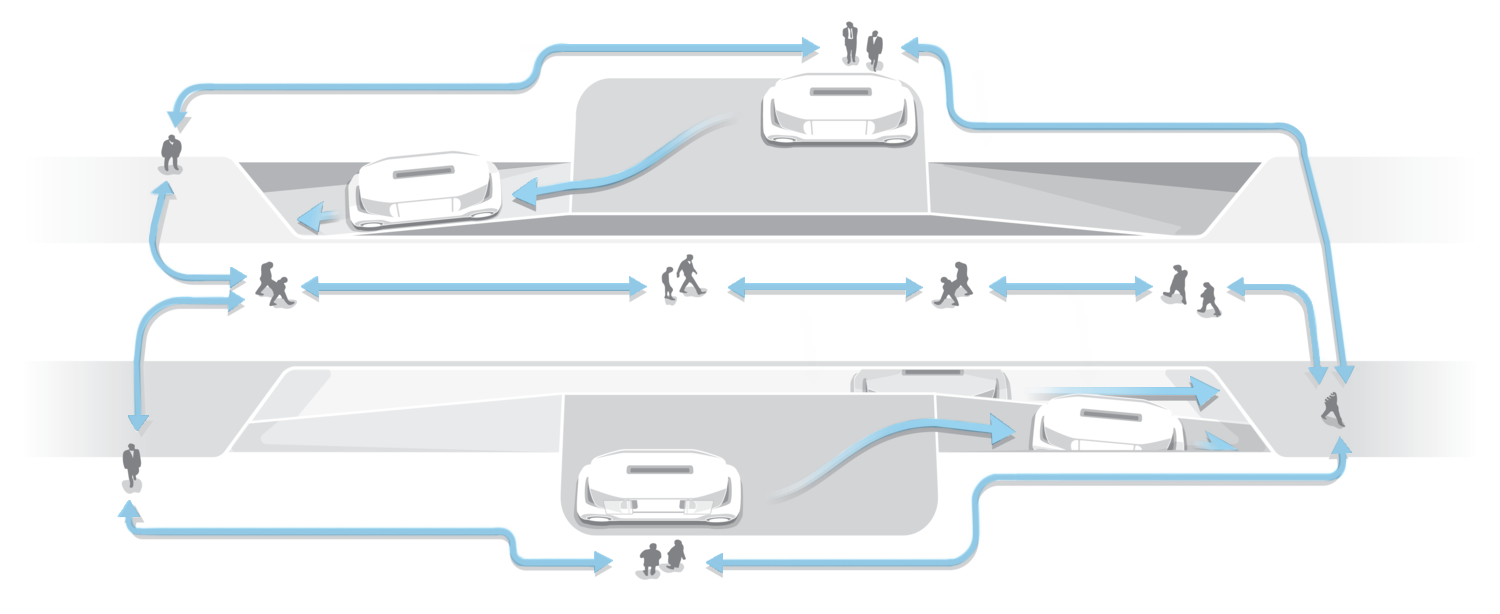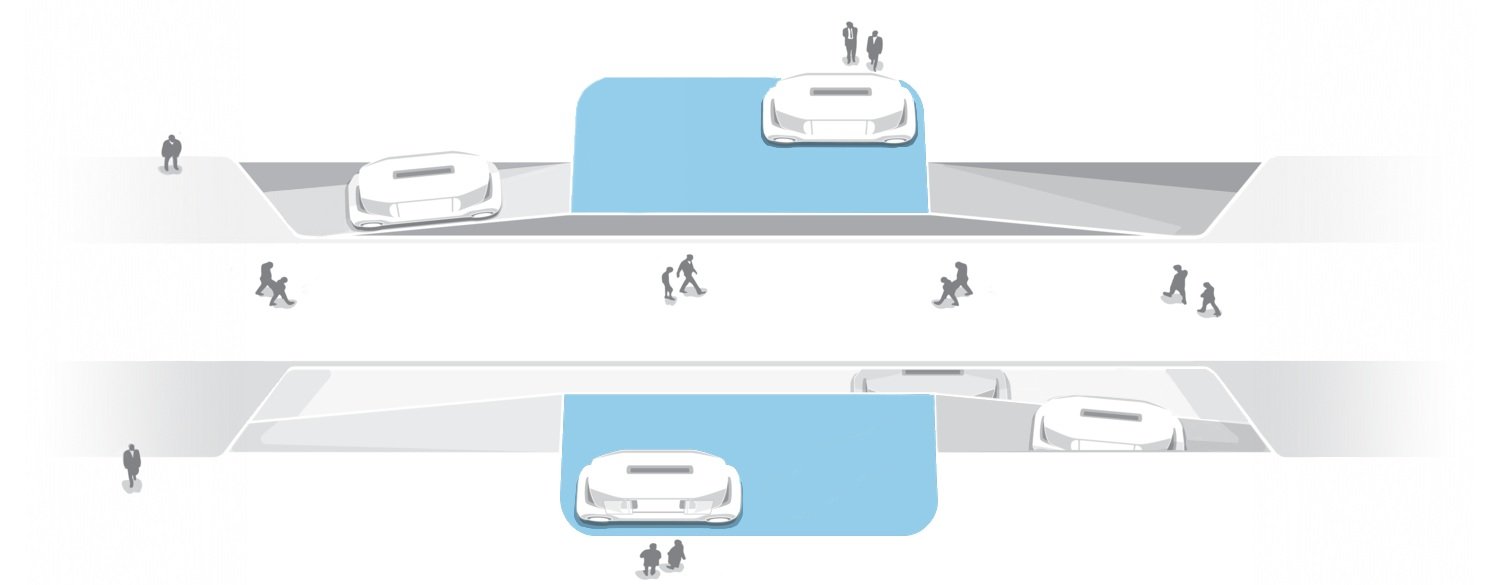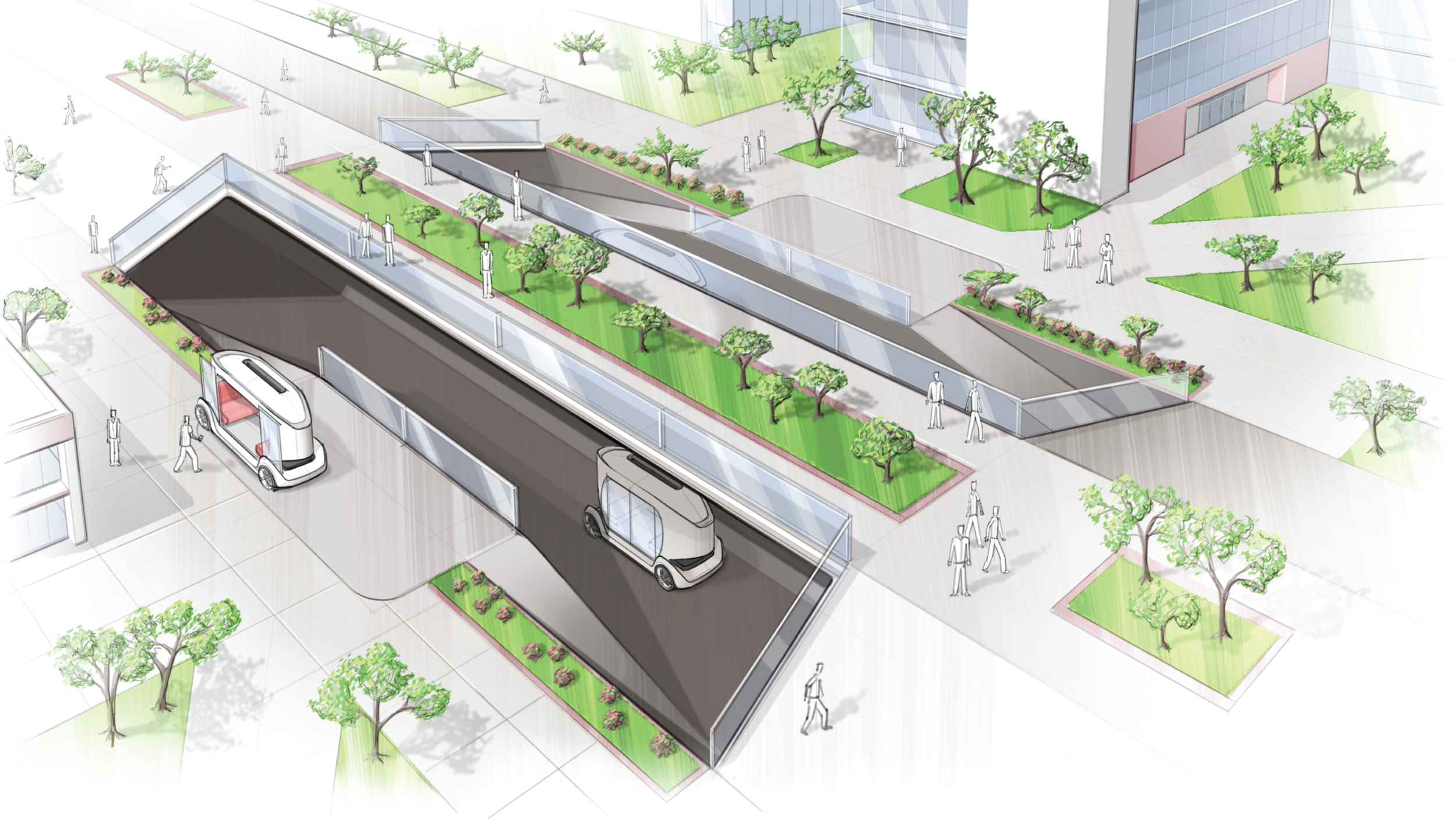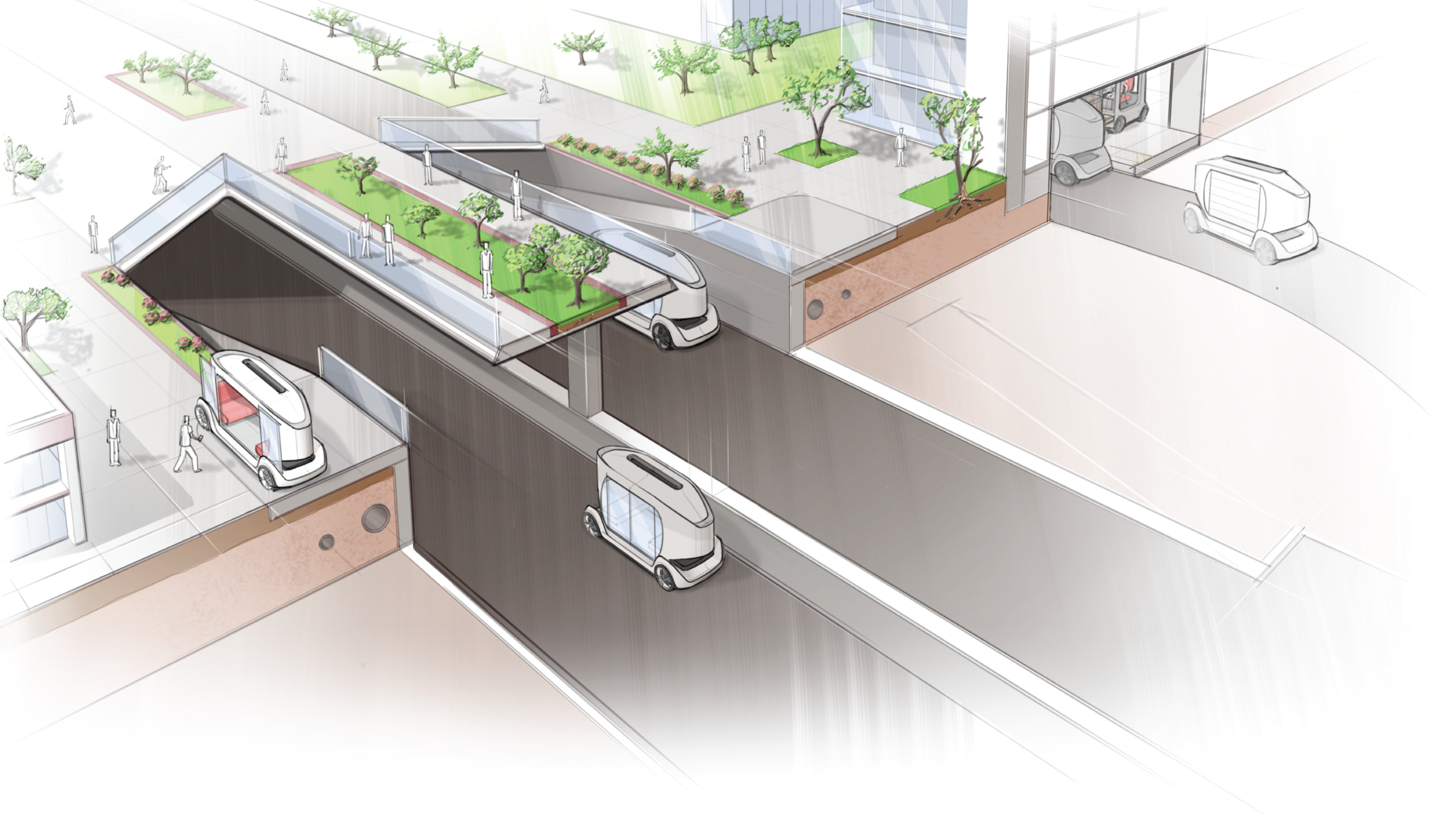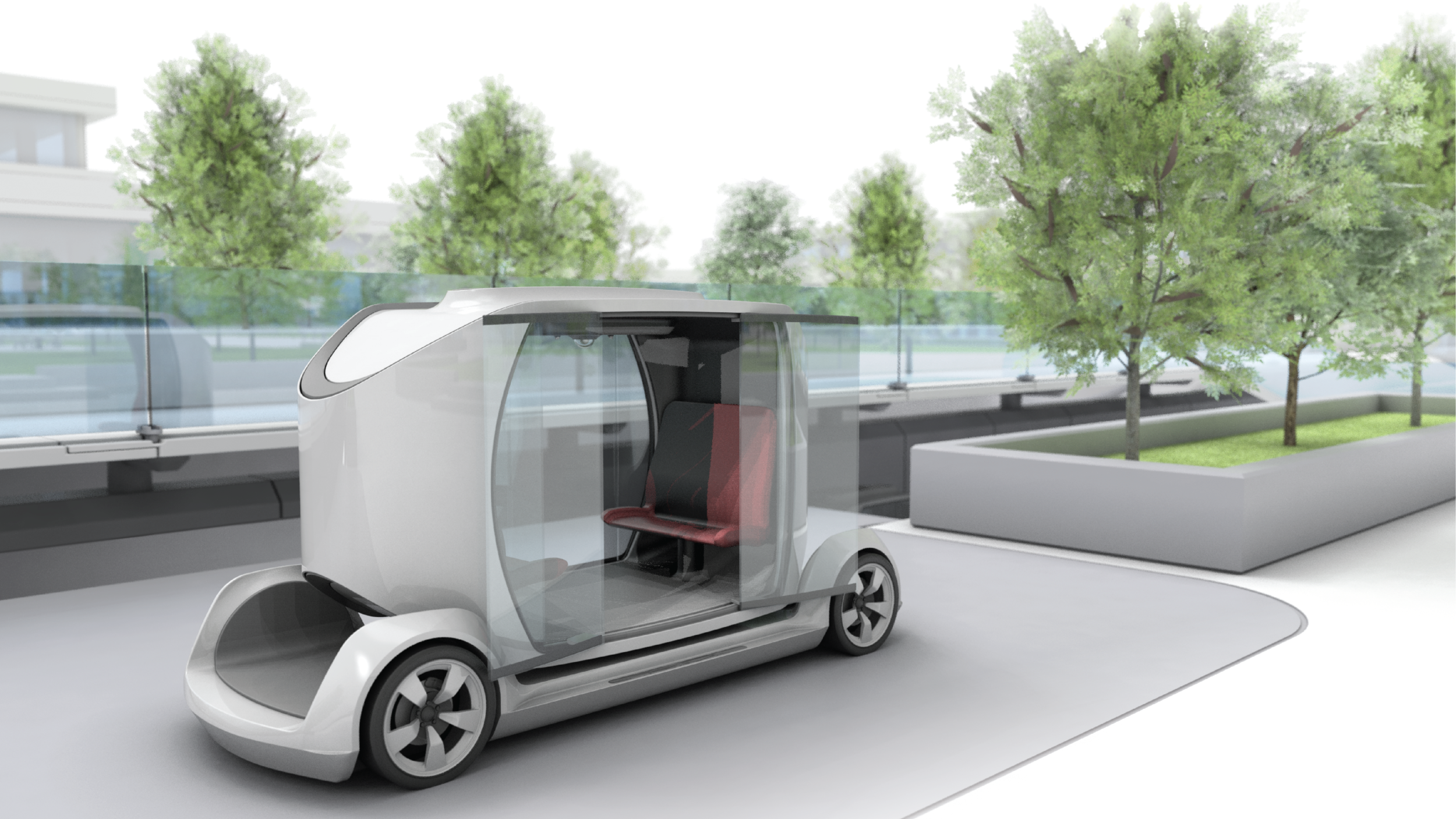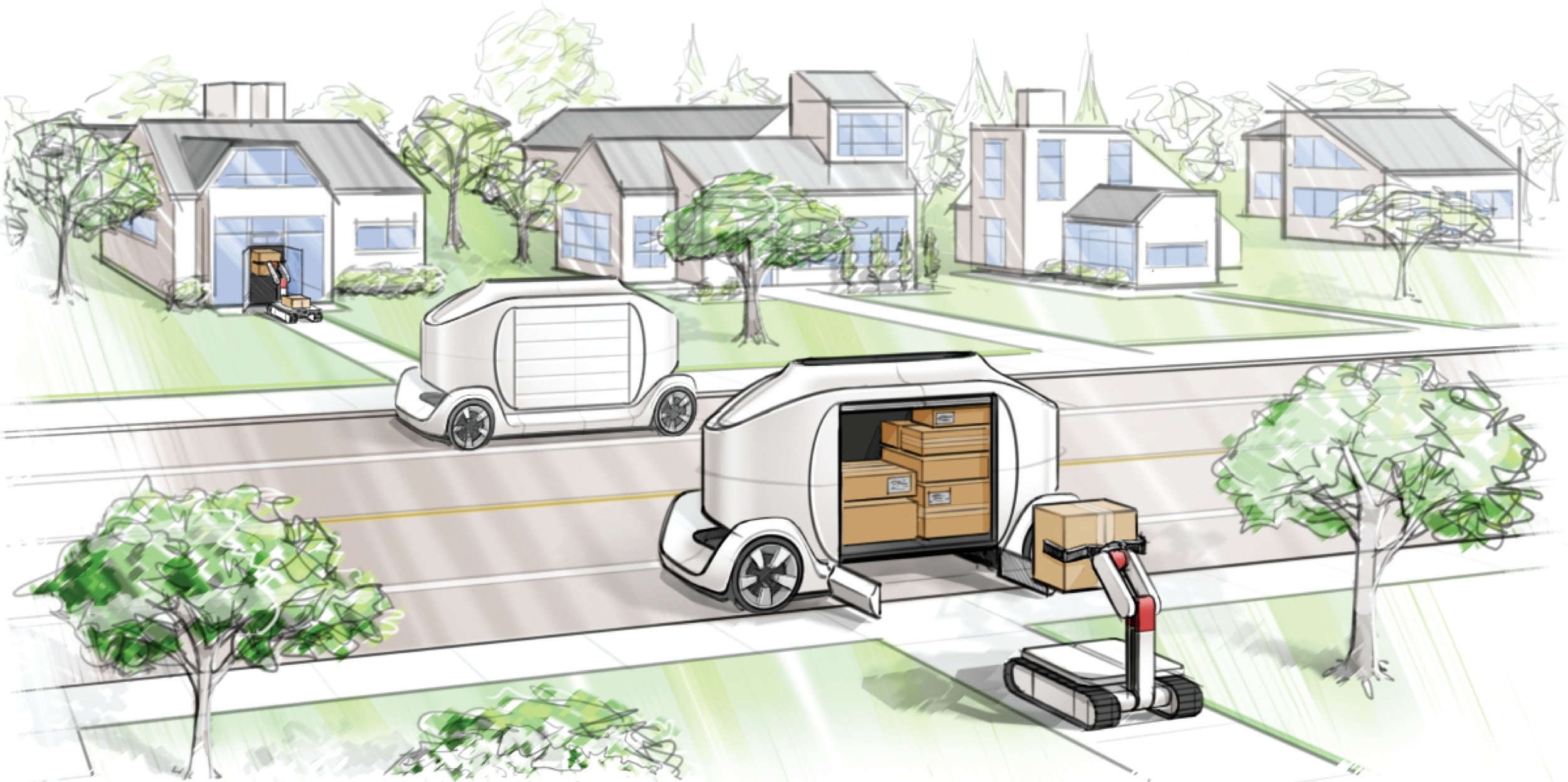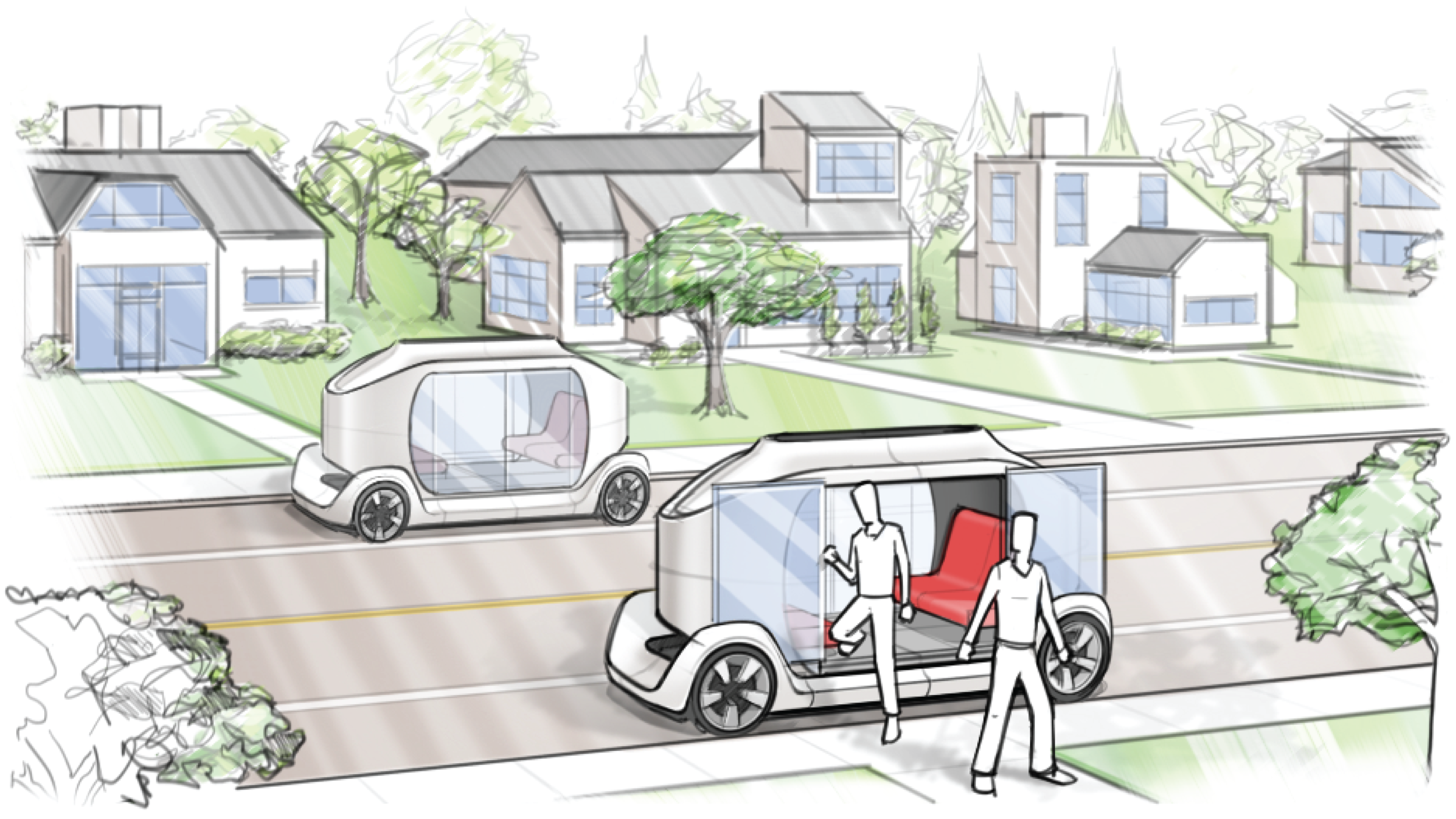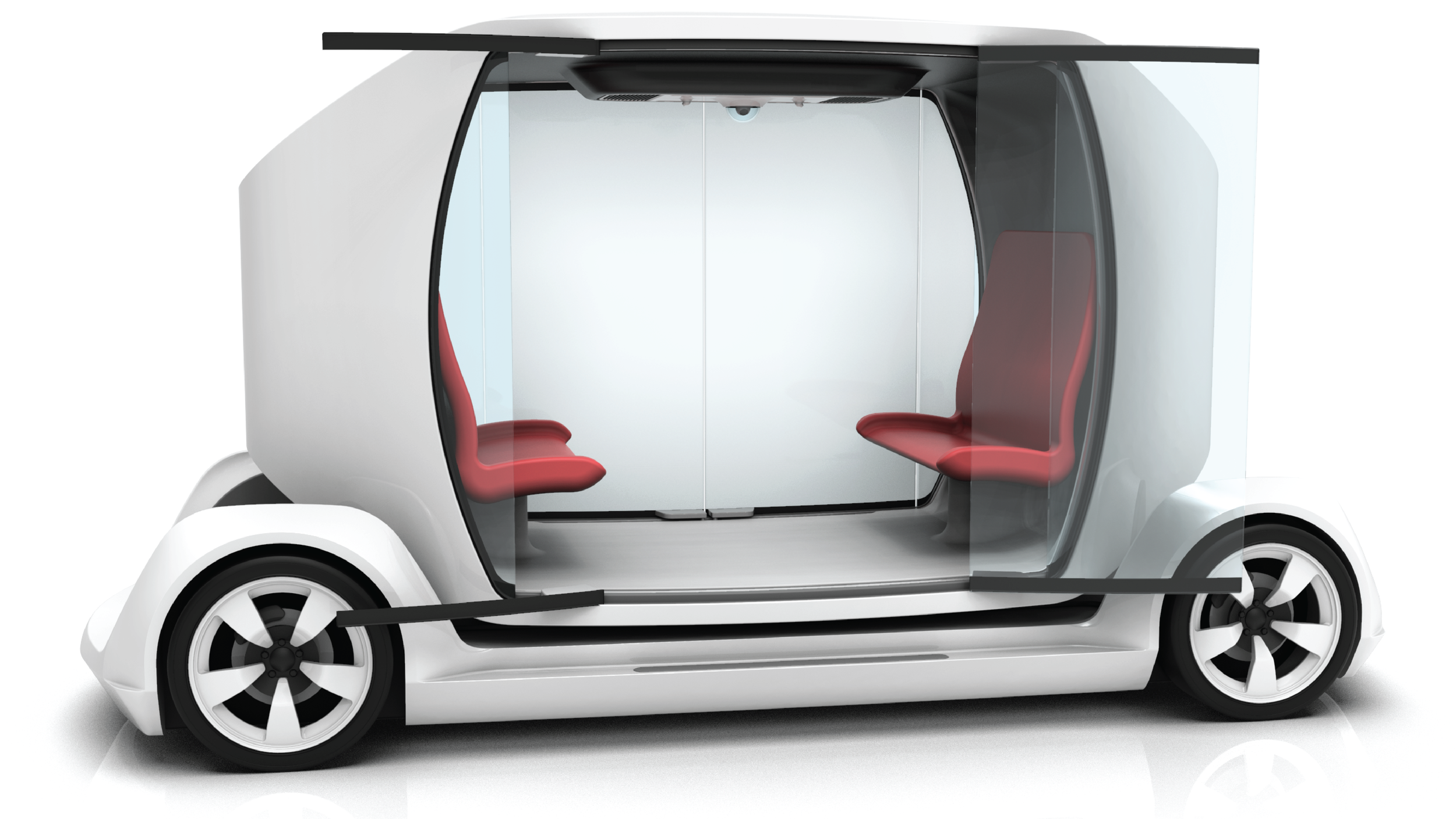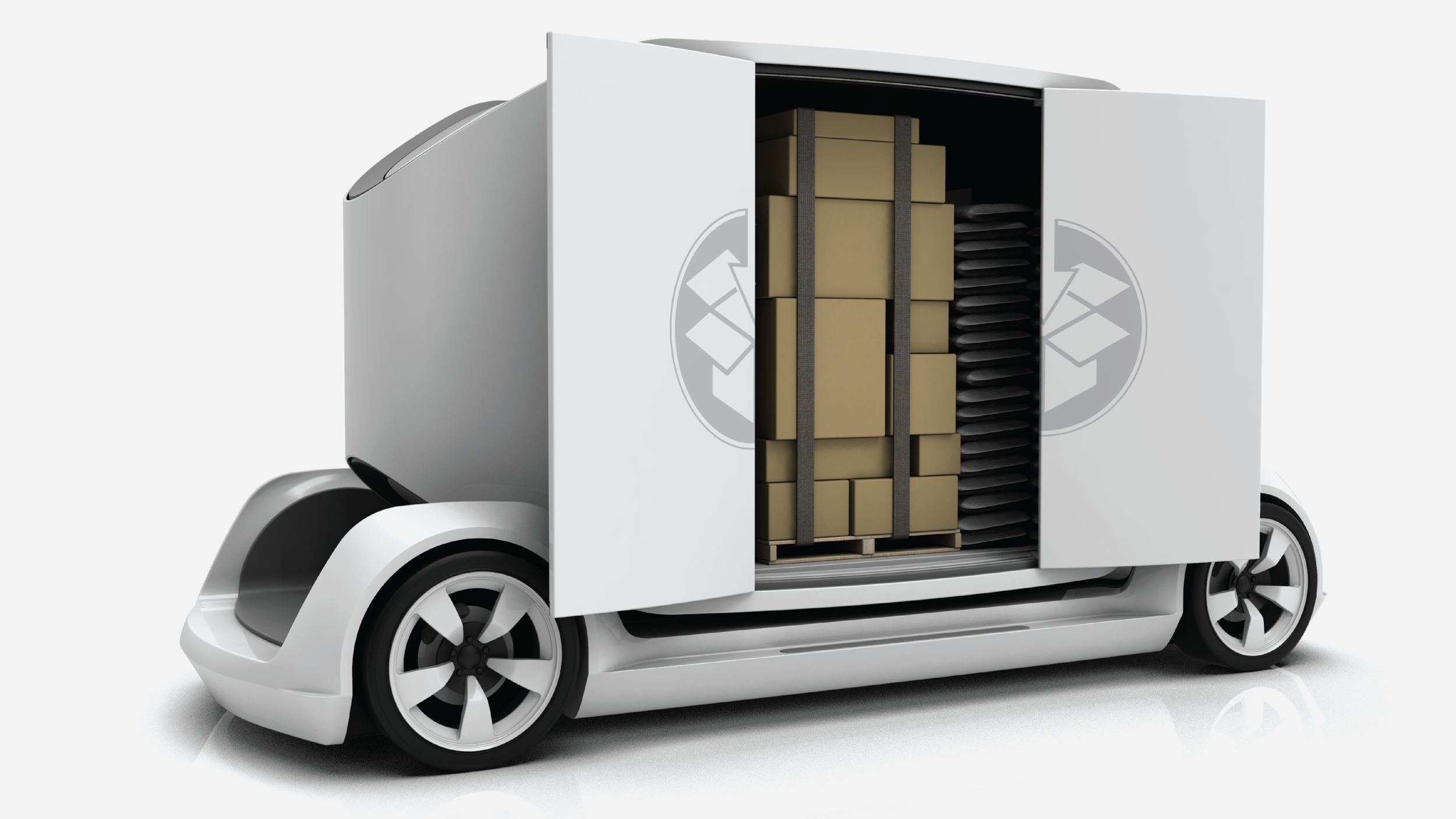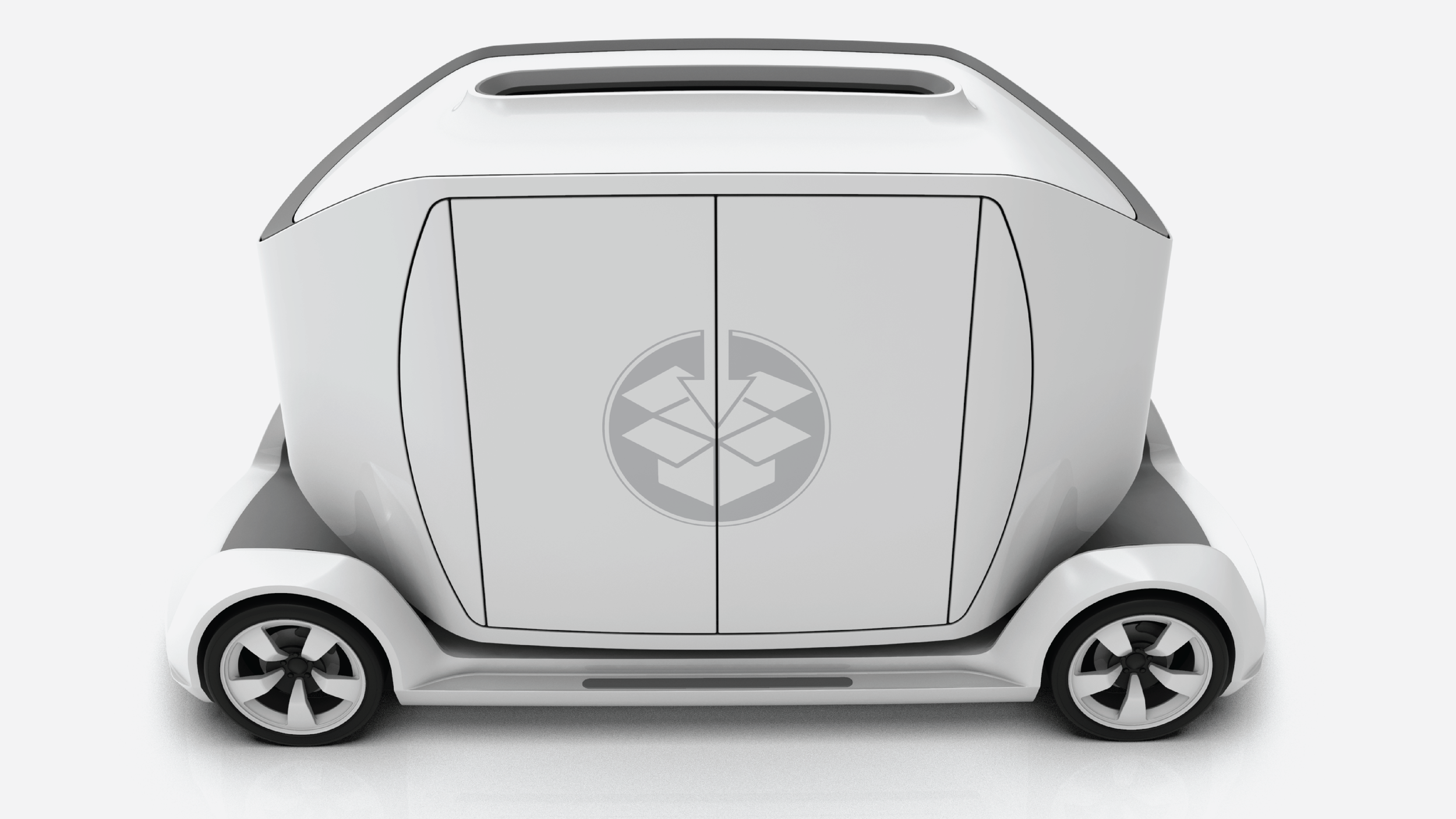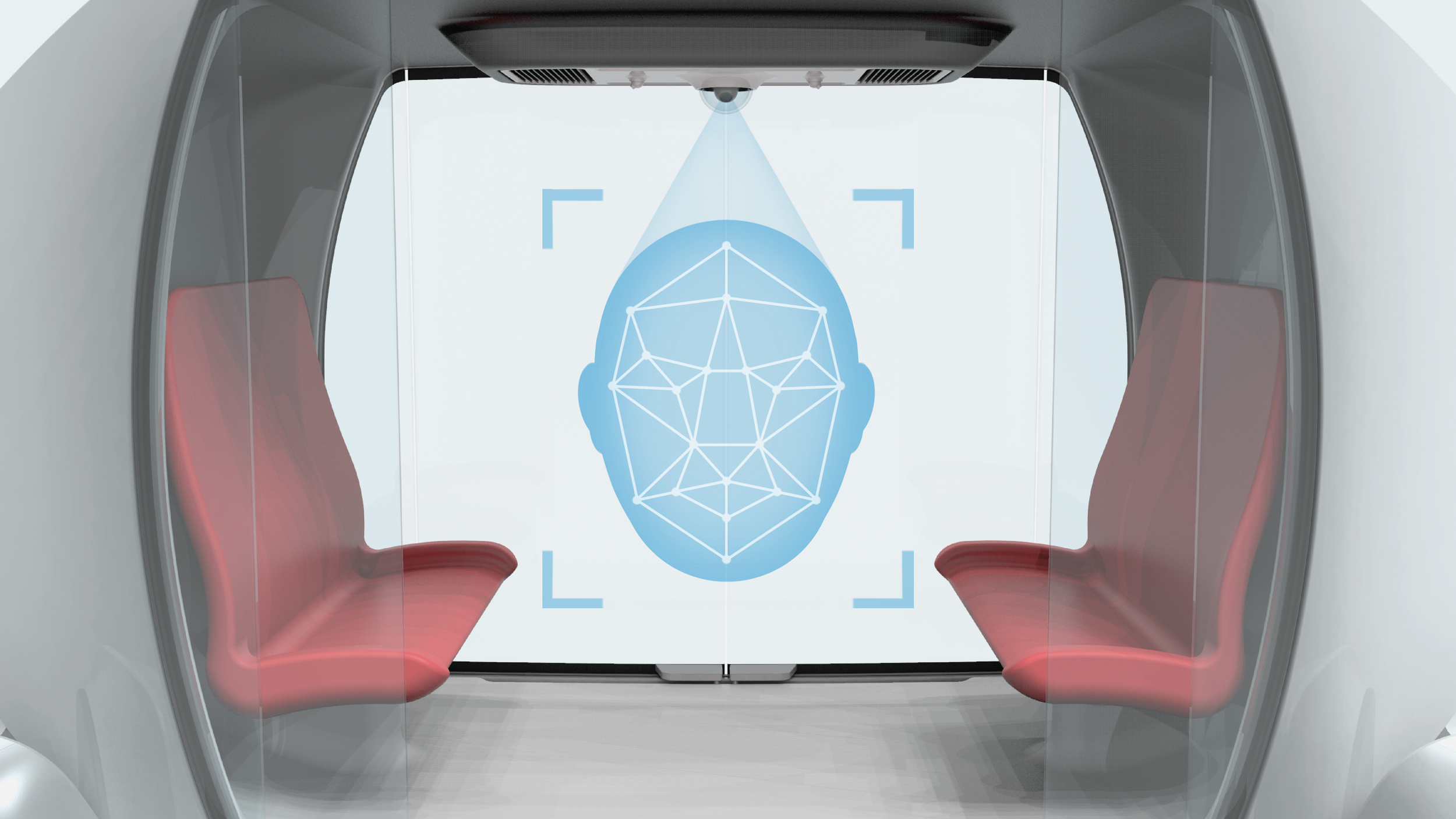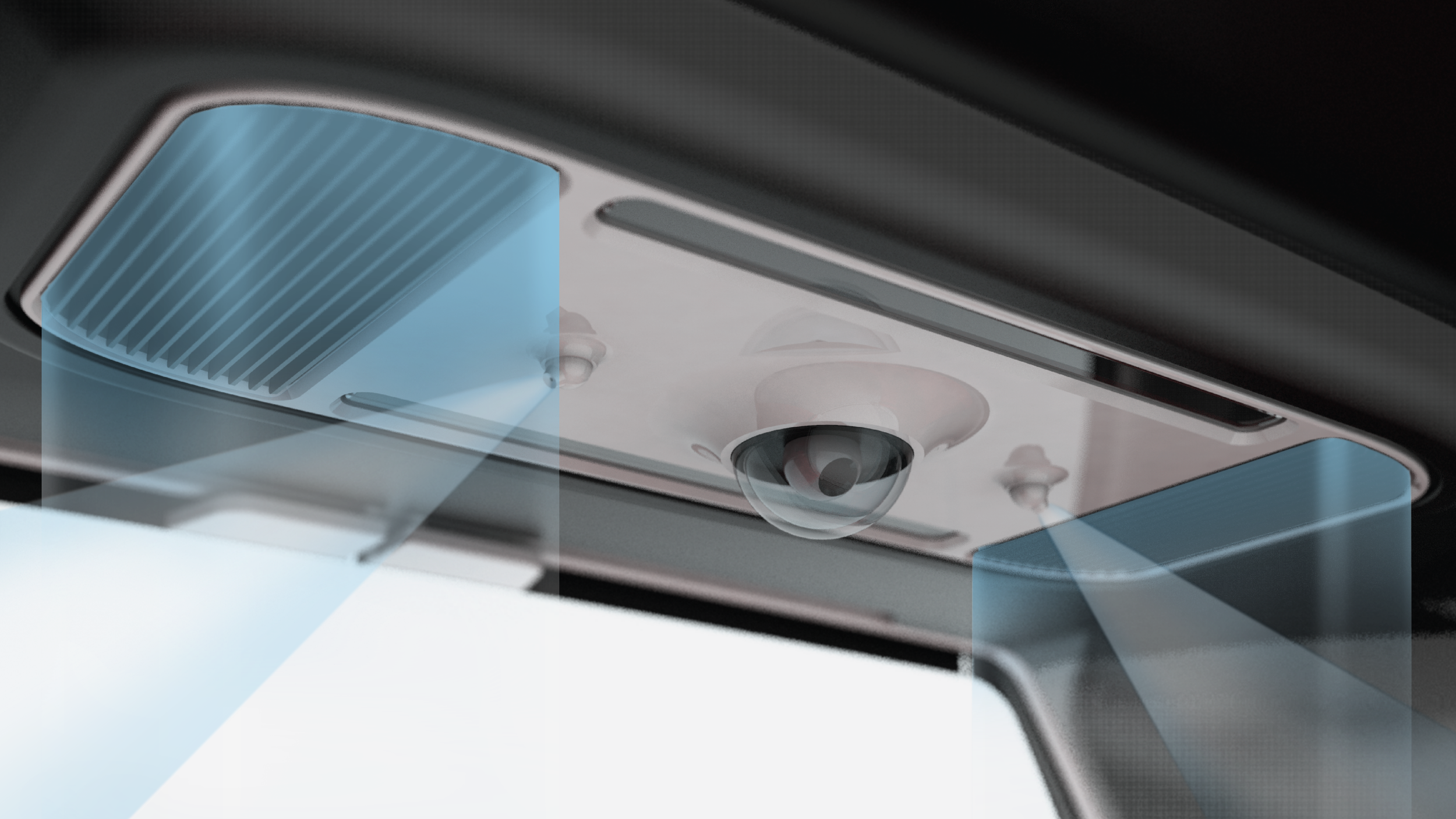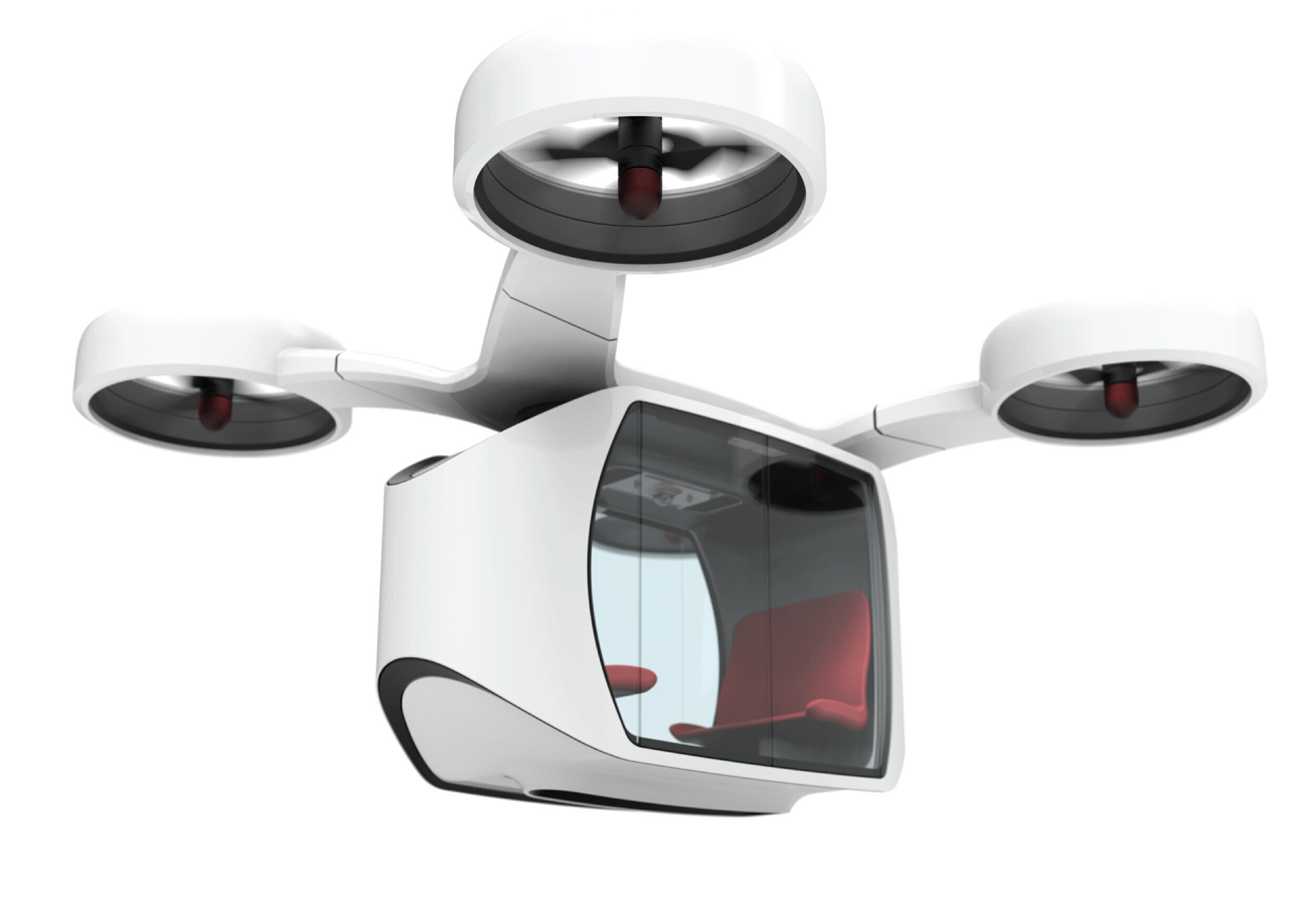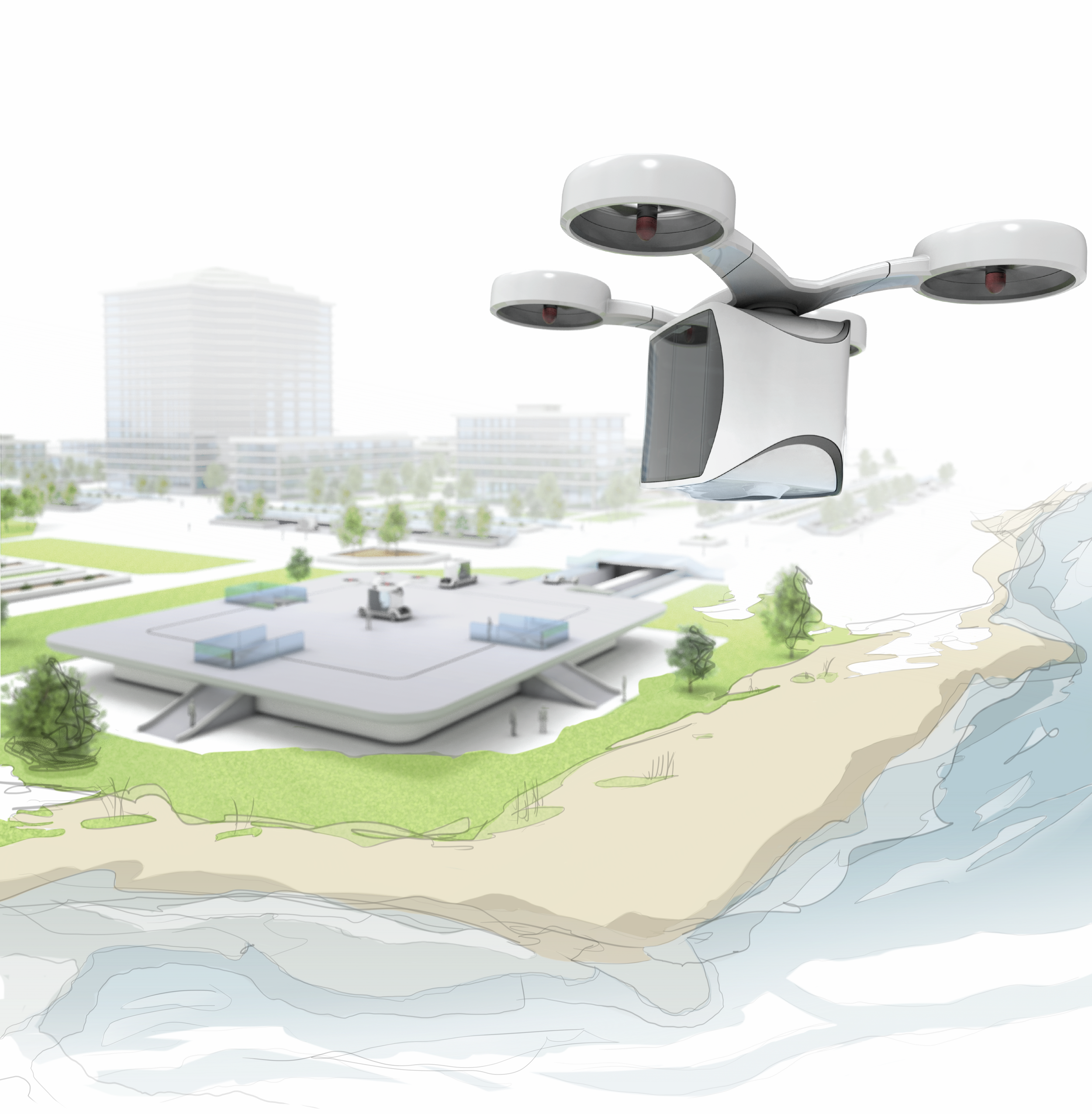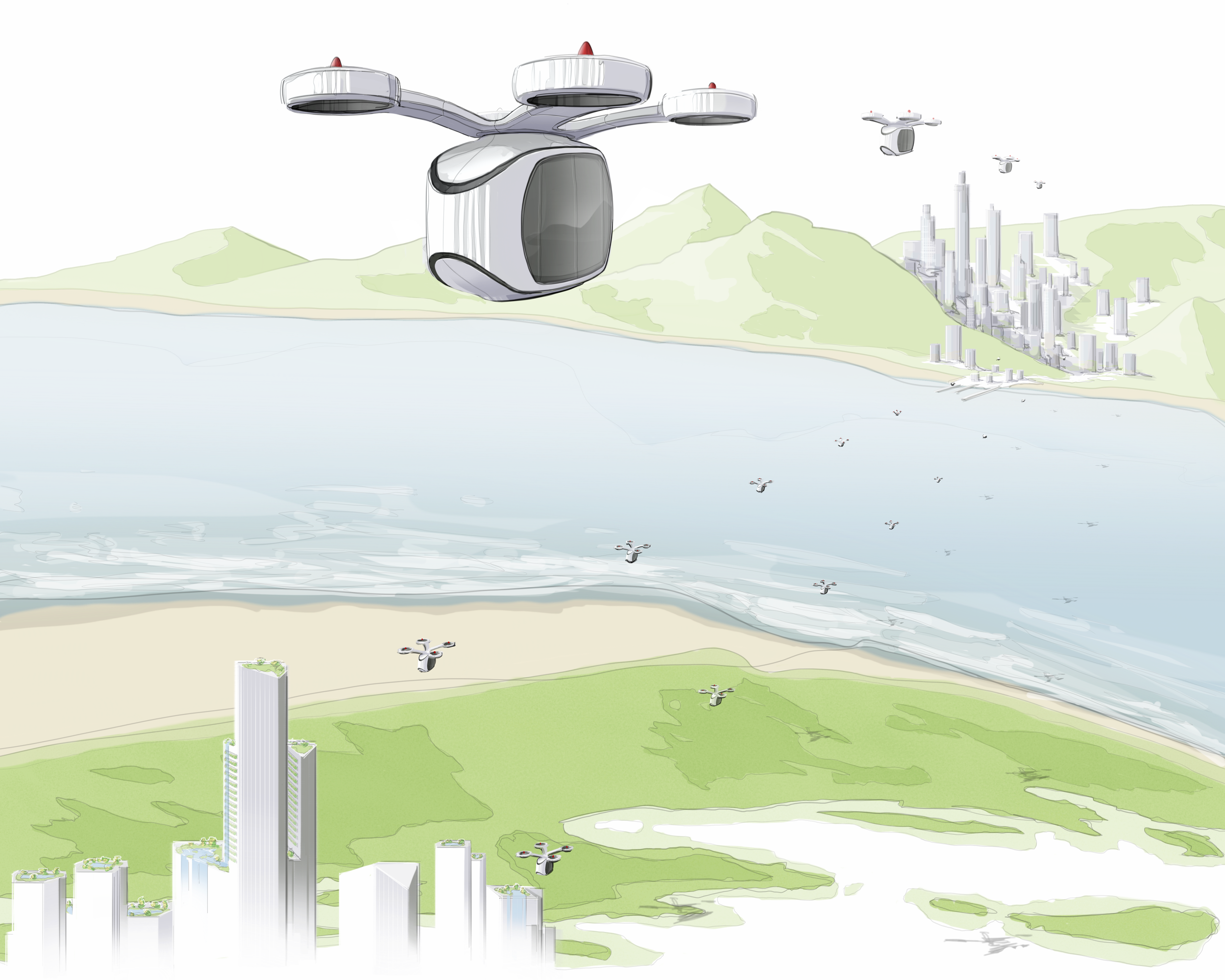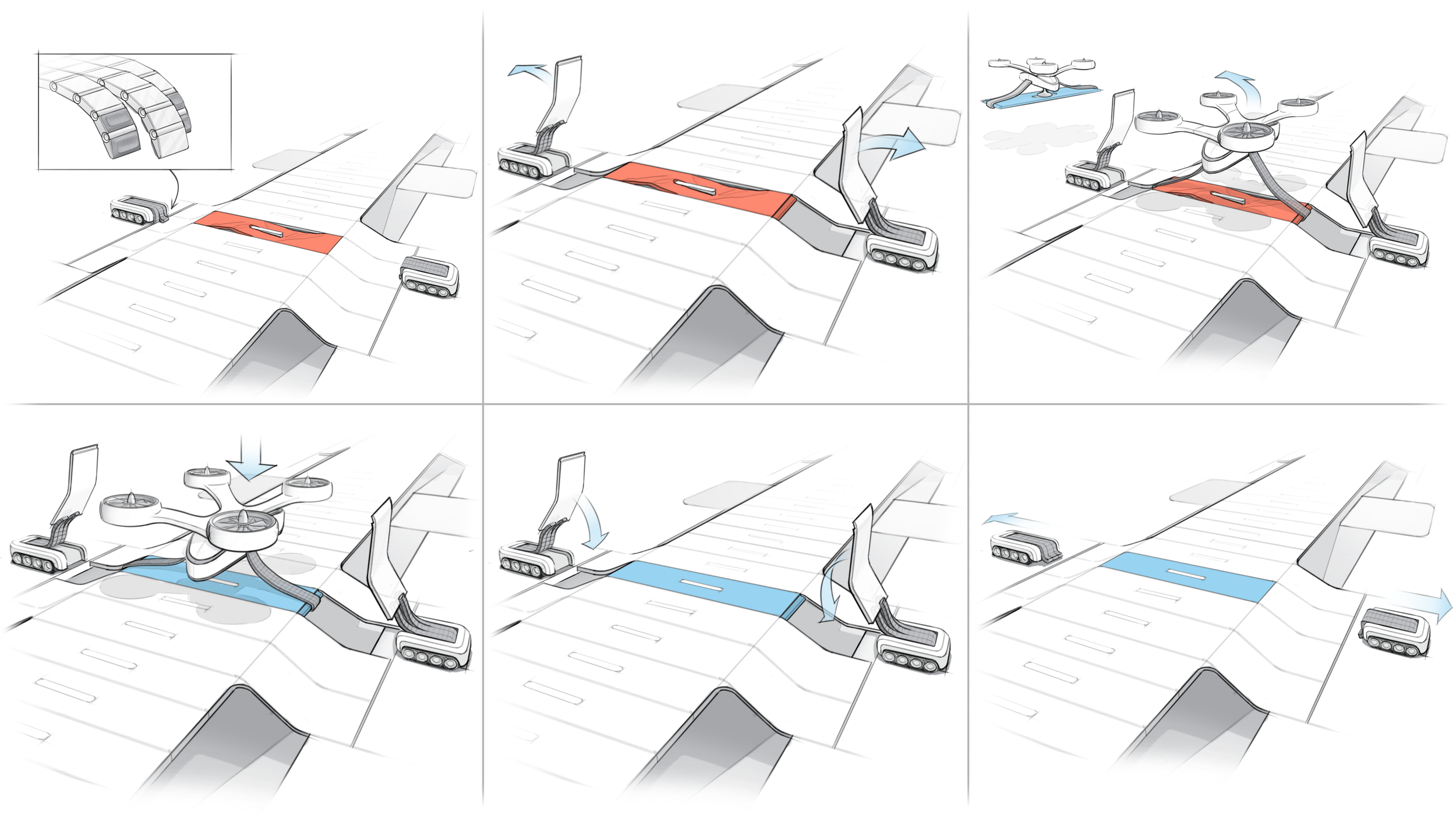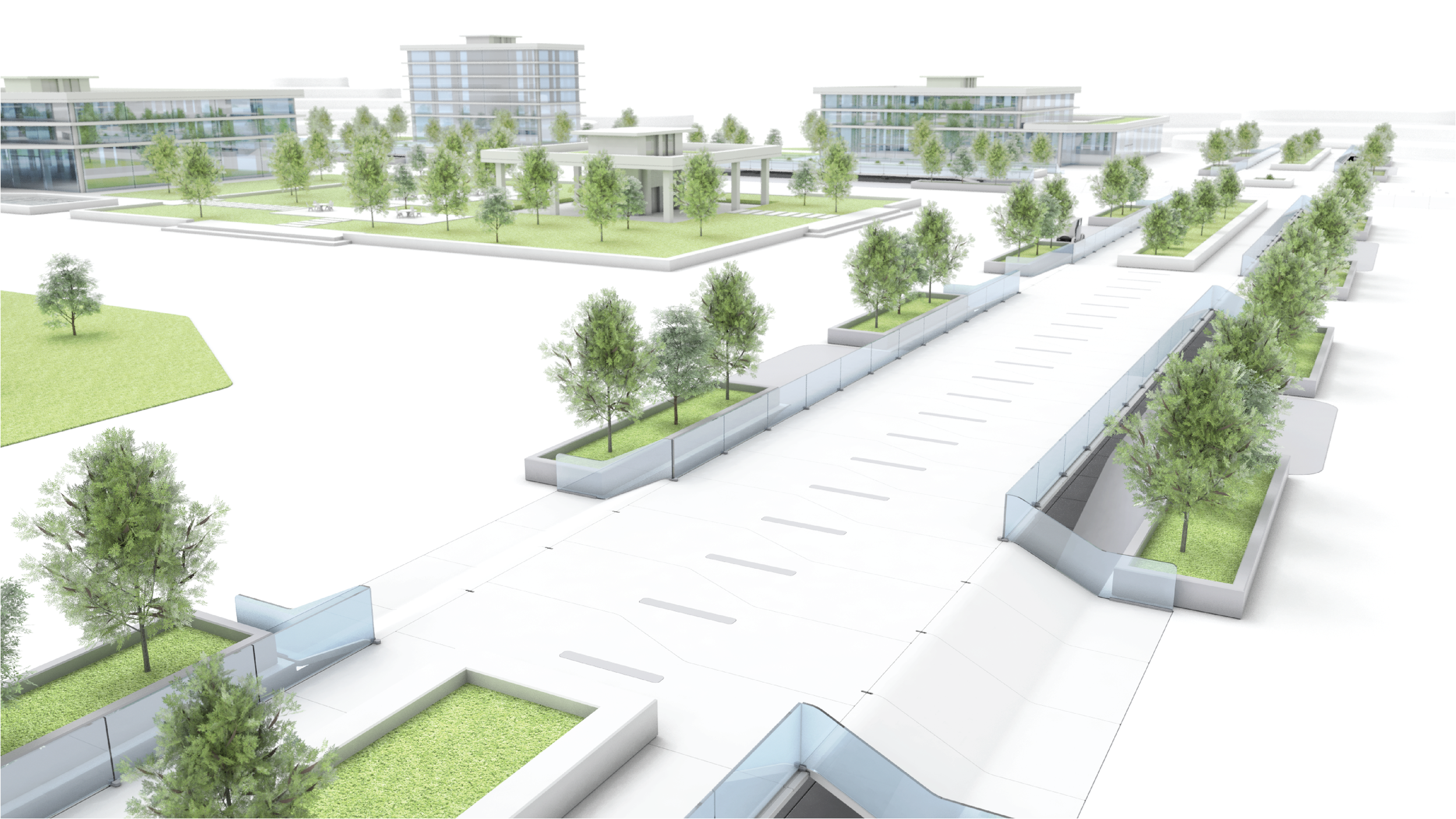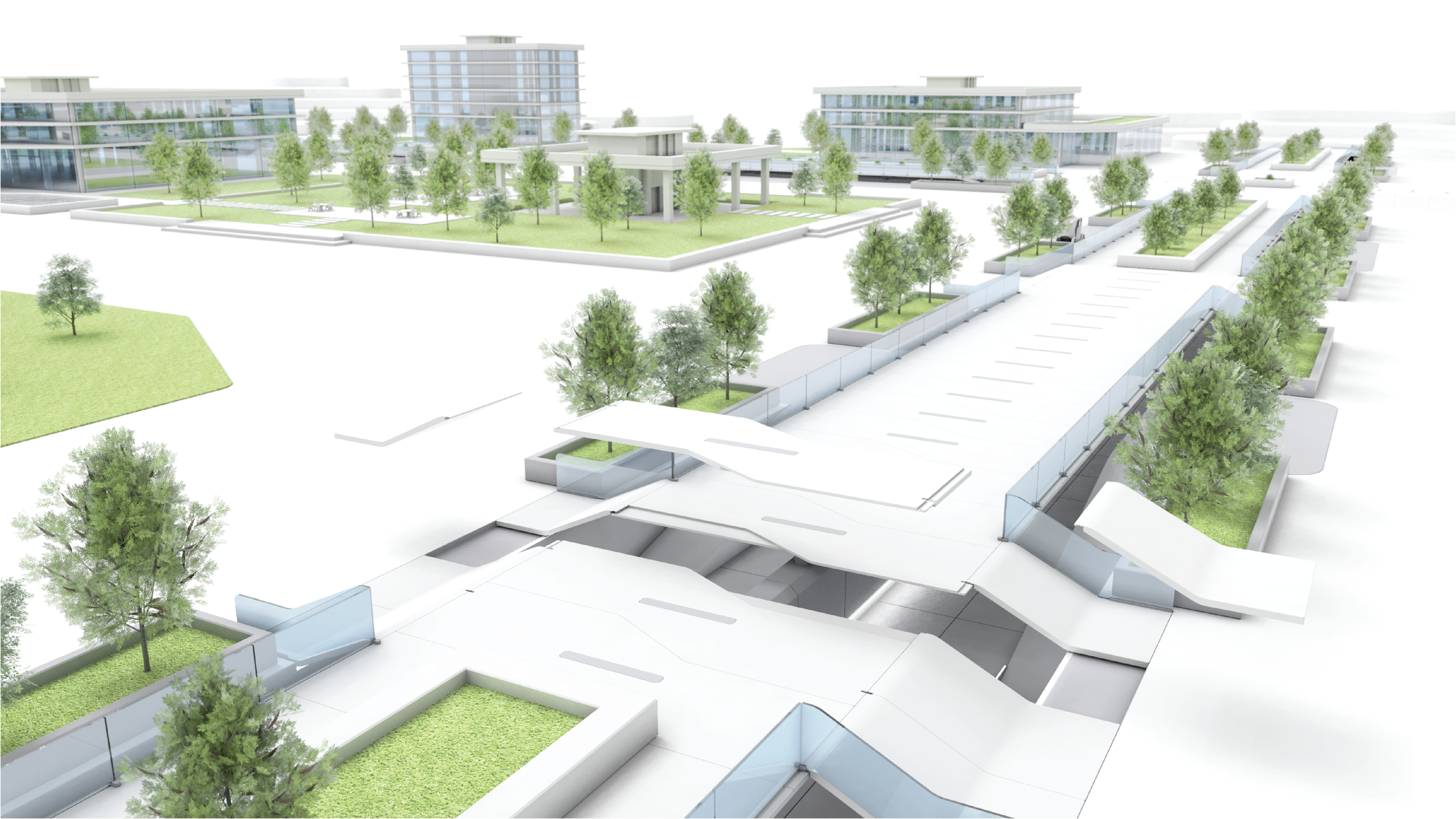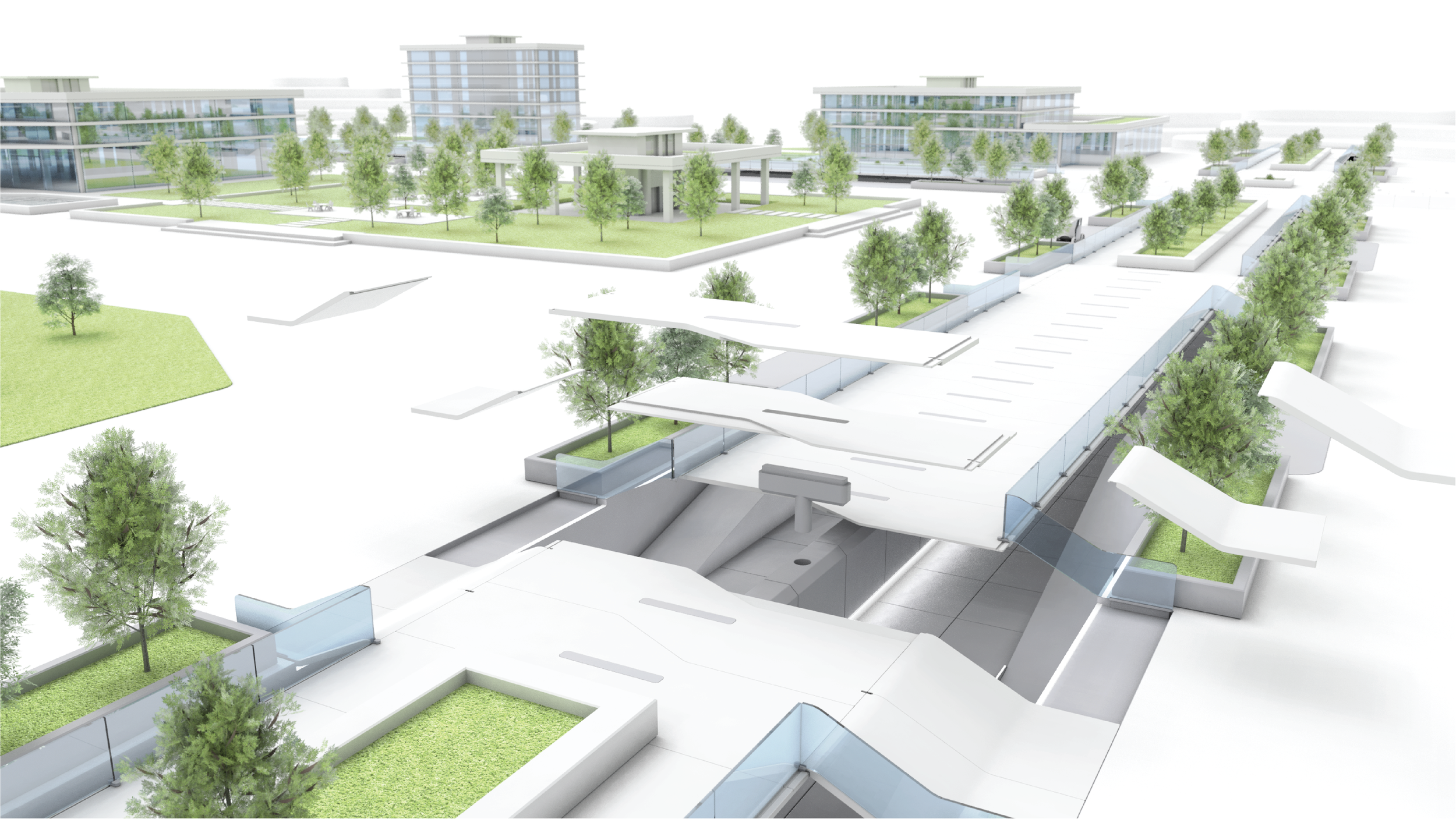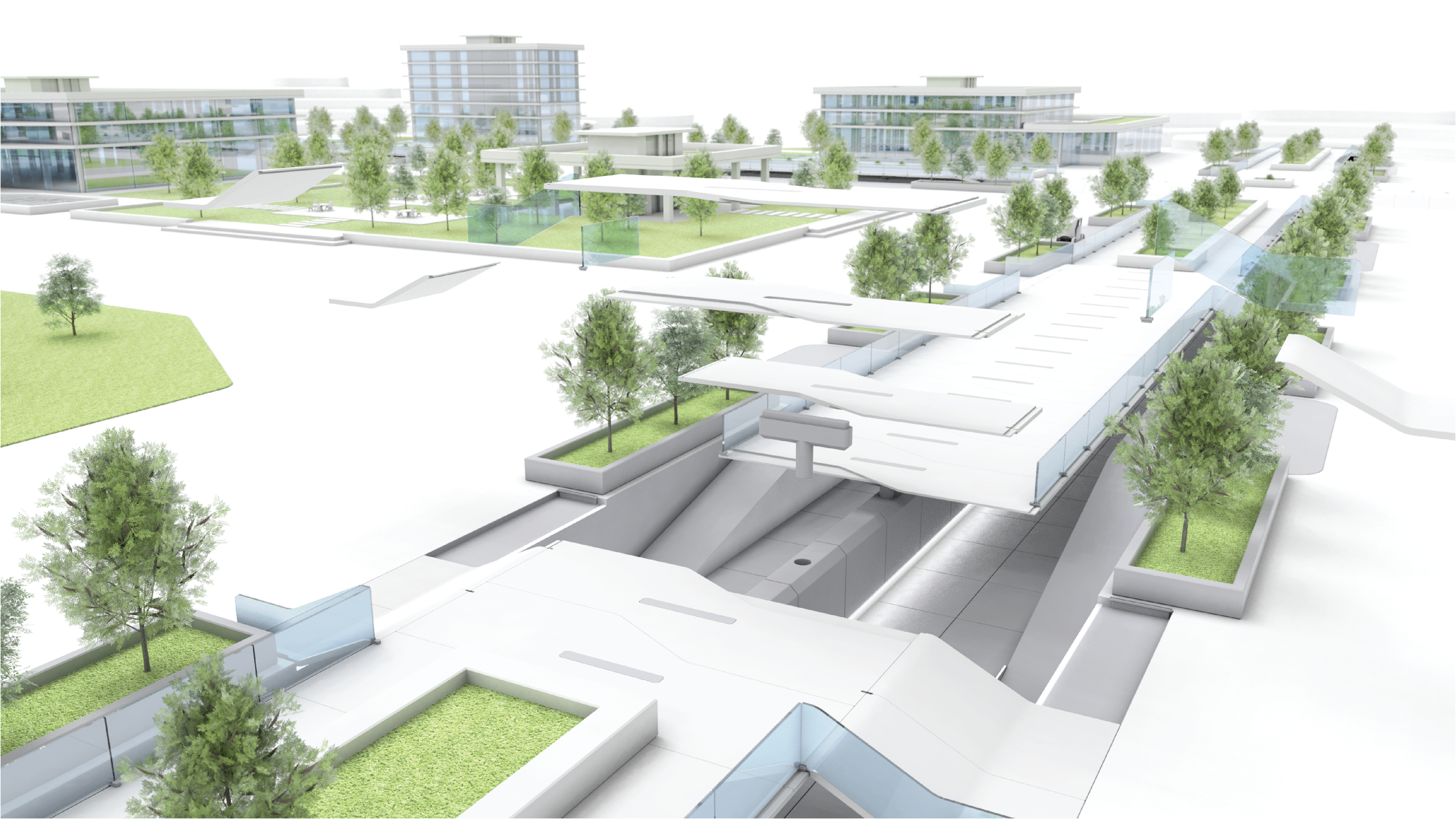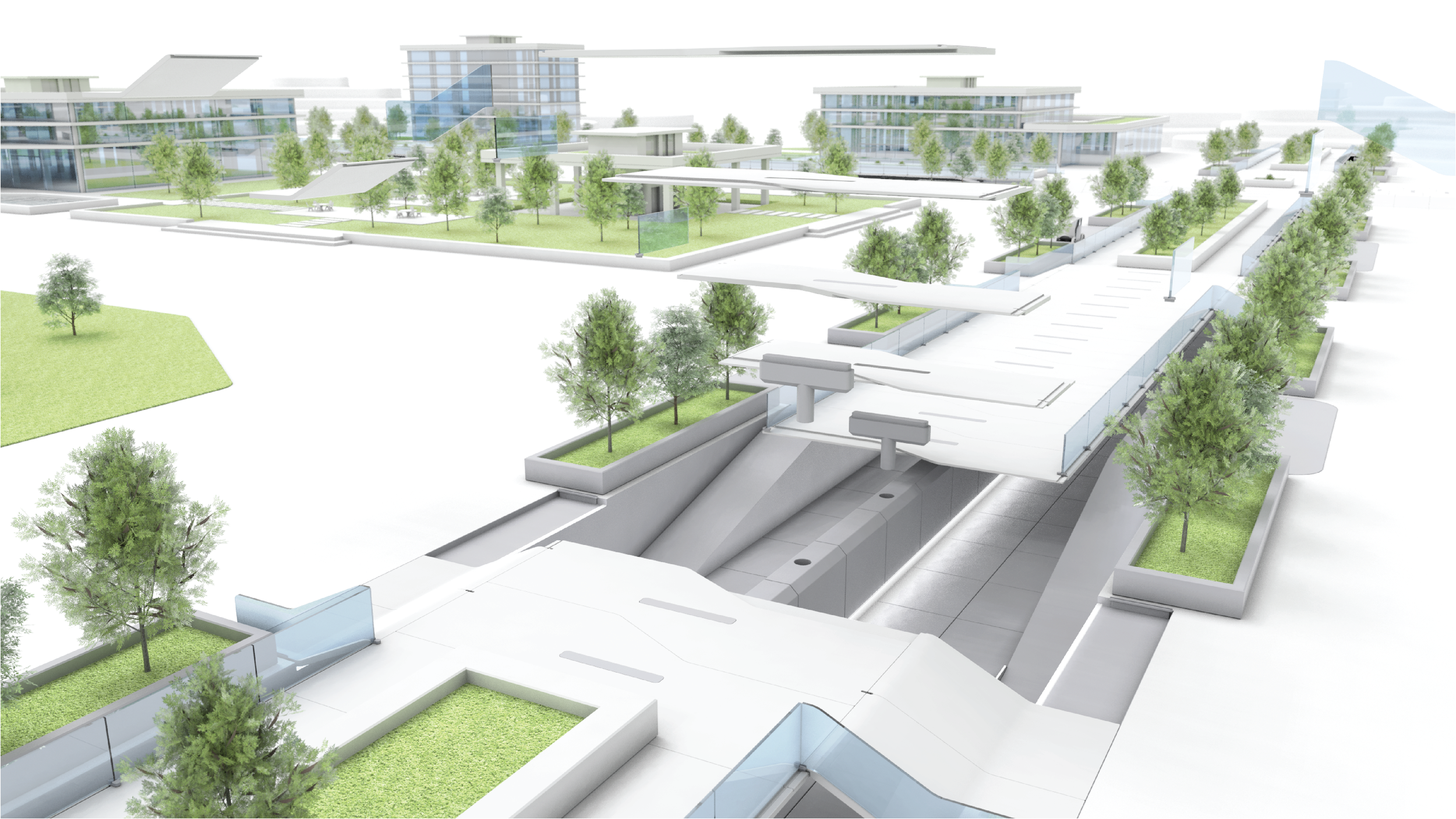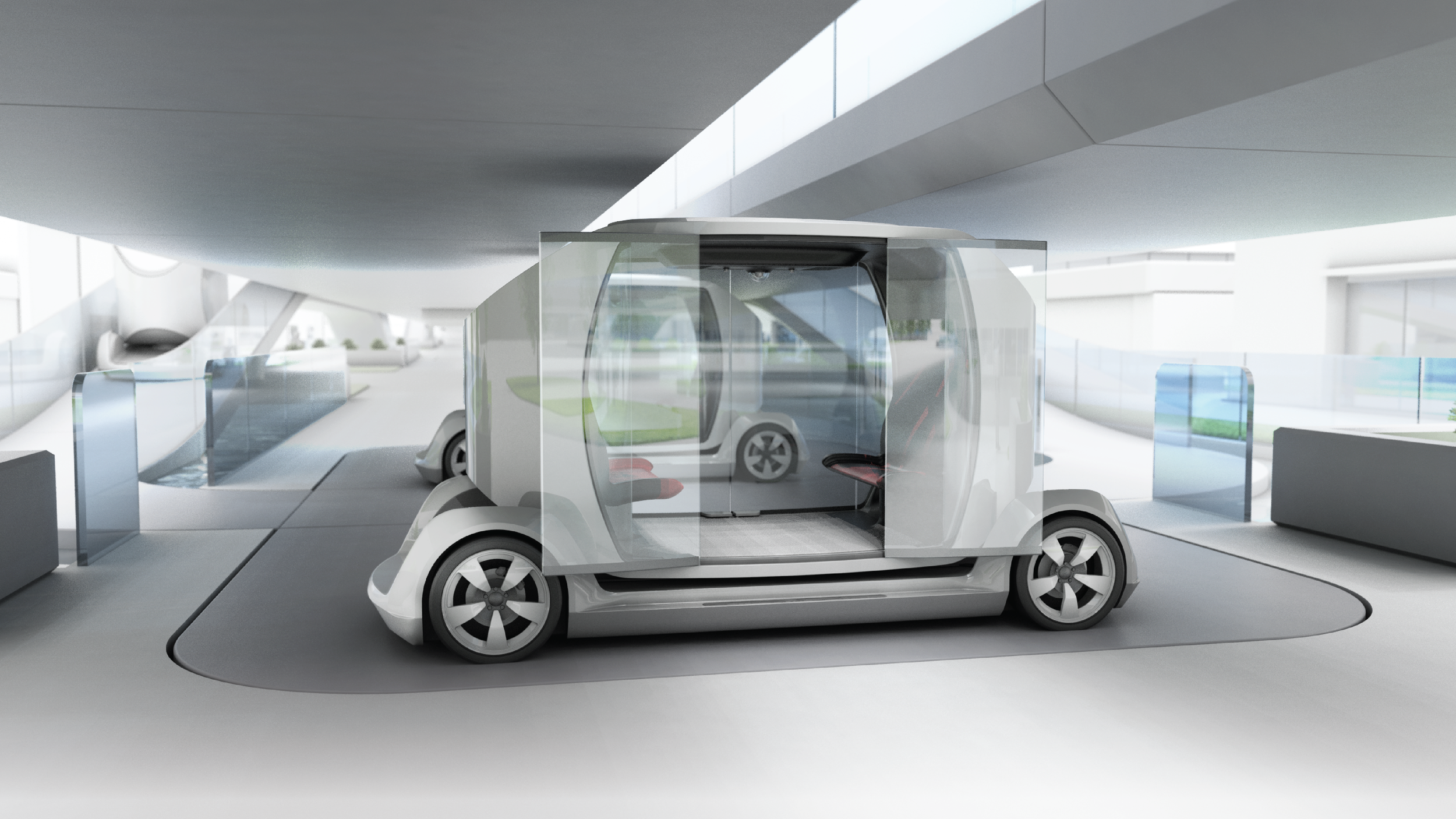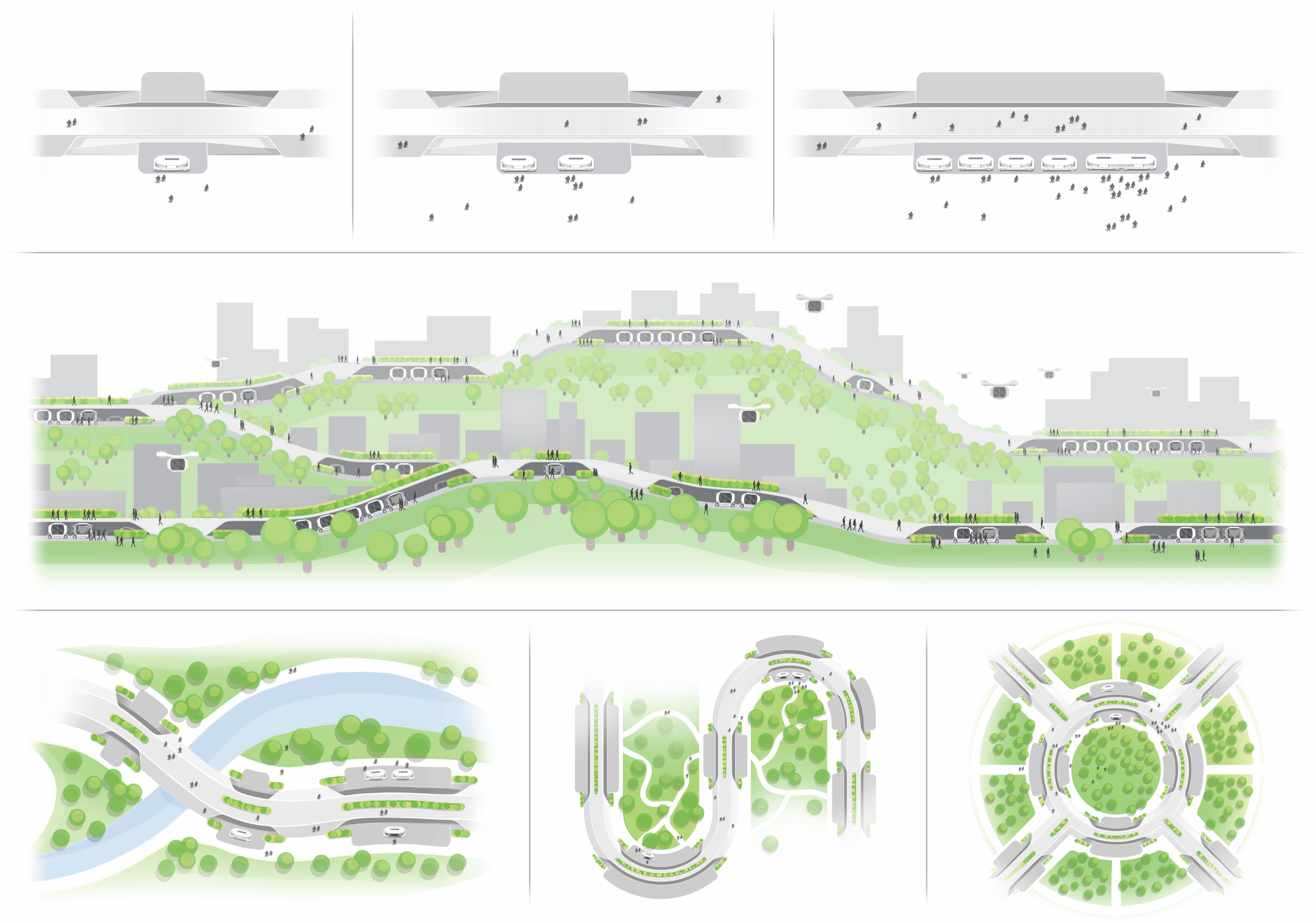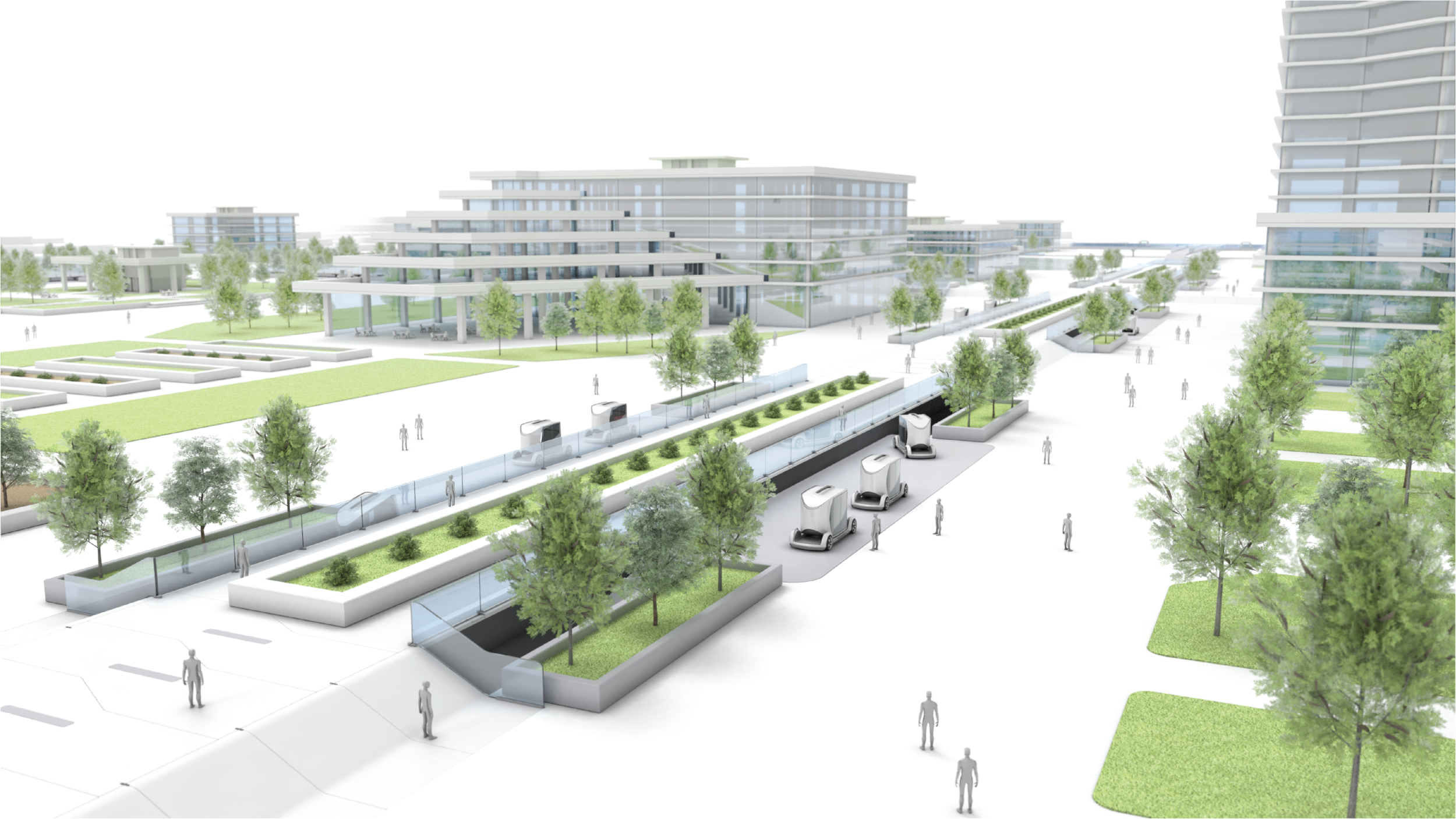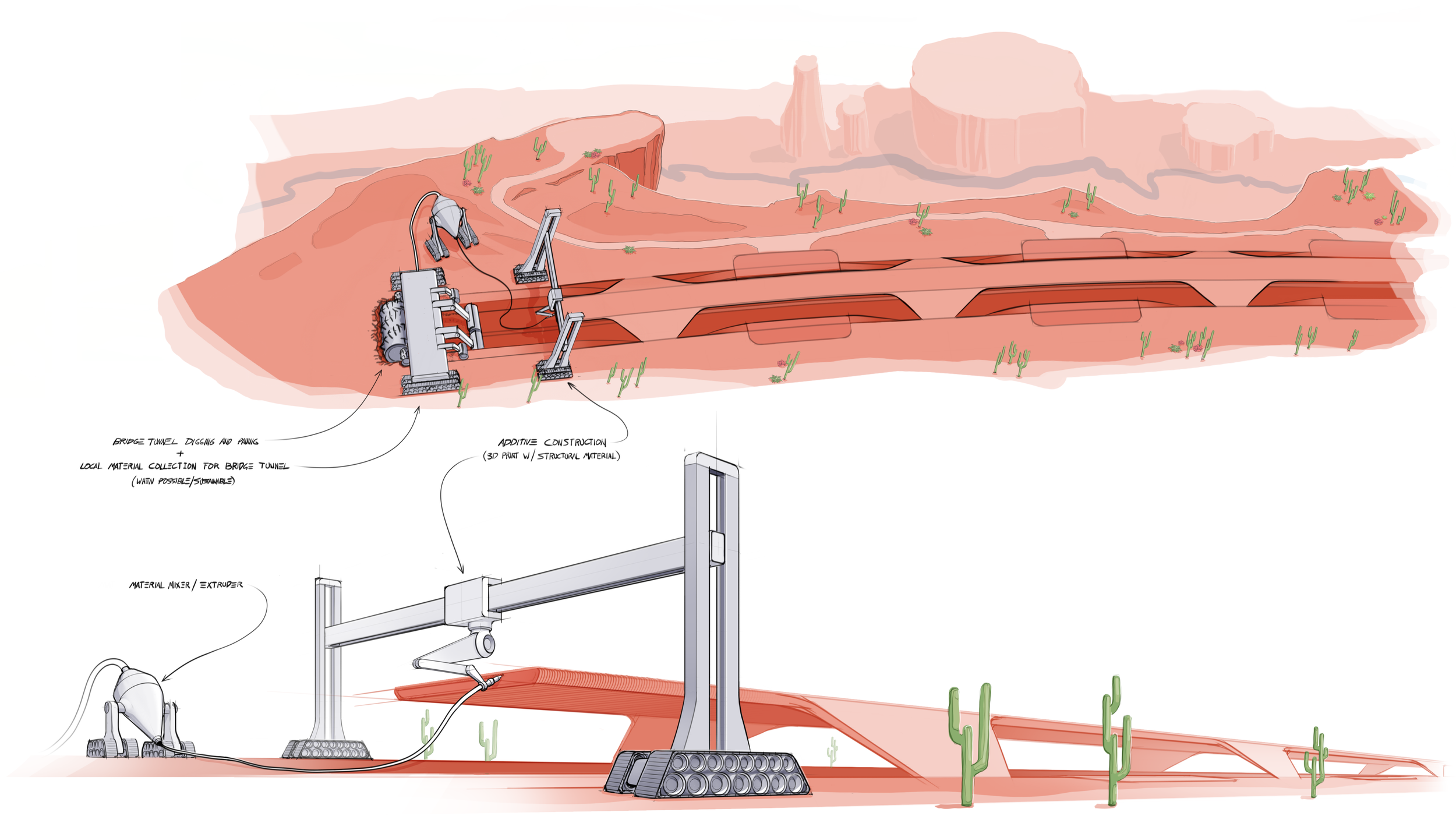A New Paradigm
Fully automated transportation is at our doorstep, meaning our diverse rural, urban and suburban communities are poised for big transformations. This aspirational vision shows a possibility for how infrastructure might evolve.
User Insights
A series of people were separately asked, “In the future, if all vehicles are self driving, what would you like from your travel experience? Also, what would you hope to see change in your community at the street level?”
Goals
Parking And Refueling Replaced
Before and after illustrations show how parking lots and fuel stations can be rezoned into greenspaces and community gardens. With unoccupied vehicles parking themselves and recharging elsewhere, bridge tunnel roads with pedestrian friendly access could replace current arrival, departure, parking, and refueling experiences.
Eliminating Intersections
If bridge tunnel roads with passenger access pads are implemented, vehicle and pedestrian routes won’t impede each other. Pedestrian and vehicle commutes will be safer and more efficient since they no longer have the risks and delays associated with intersections and crosswalks.
Access Pads
Meant to be safe, intuitive and scalable based on density, passenger access pads encompass the passenger experience of arriving or leaving a location by vehicle. Delivery of goods can be handled similarly, utilizing subterranean cargo access pads.
Intuitive Access
When entering a vehicle or arriving at a destination, intuitive access pads are meant to be the only shared space for vehicles and pedestrians. This enables multiple travel methods to coexist in the same space, ensuring all commuting options are safe, pleasant and efficient.
Initial Feedback
After eliciting feedback from a series of people and recording their responses, trending additional topics needing to be addressed started to come into focus for further exploration.
Scalability
Environment
Suburban Tweaks
Bridge tunnels aren’t needed everywhere. Suburban communities can zone lanes for commuting, passenger drop-off and package delivery to meet their needs.
Rural Versatility
There is value in supporting rural communities and those who produce and transport raw goods. Exploring options for all ecological conditions, economic needs, and cultures will be the key to implementing an effective scalable global solution.
Modular Vessels
Modular designs with minimal and easily reconfigurable constructions can help avoid complicated maintenance and non-recyclable end of life components. Vessel architectures should enable a range variants for both passengers and cargo.
Clean and SecurE
Safety and security features may include secure access through face recognition, antiviral spray nozzles, filtered HVAC and a standardized locking mechanism for vessels to connect to an array of powered vehicle chassis.
Vessel Lifting Drone
A drone can provide quick transportation over natural features like rivers, bays, and hard to traverse terrain. With top and bottom modular locking mechanisms, vessels can be lifted by drone or rest on a roadgoing platform.
ASSEMBLY AND MAINTENANCE
The pedestrian bridge tunnel’s modular sections will use a sustainable soft material coating a lightweight aluminum frame. The sections should be easy to assemble and disassemble when they require replacement.
Above Ground Options
In some cases natural and man-made environmental conditions may lead to situations where bridge tunnels will not be feasible. Anticipating this, above ground options could include a raised roadway with access pads underneath, and a gondola rail referencing my previously developed community transit project.
Flexible Scalability
Pedestrian friendly bridge tunnels with access pads of various scale, curvature, and elevation can weave through communities, without creating barriers. Pedestrians, passengers, cargo and delivery goods can move much more efficiently, even through densely populated cities.
Future Steps
Moving forward, I’m seeking collaborative partners to enable developing this concept further sustainably for a variety of ecosystems, integrating it harmoniously with utilities, and leveraging human centered innovation to ensure intuitive usability.
